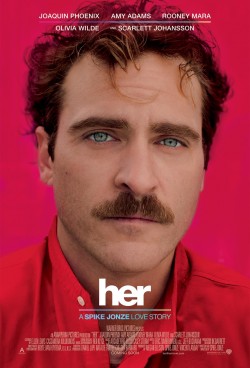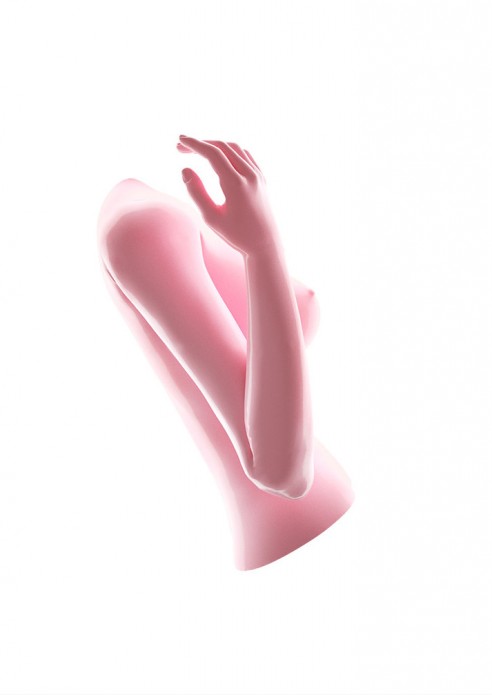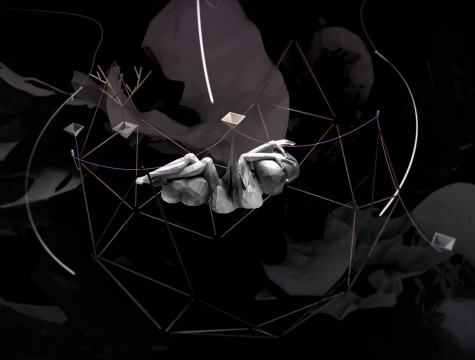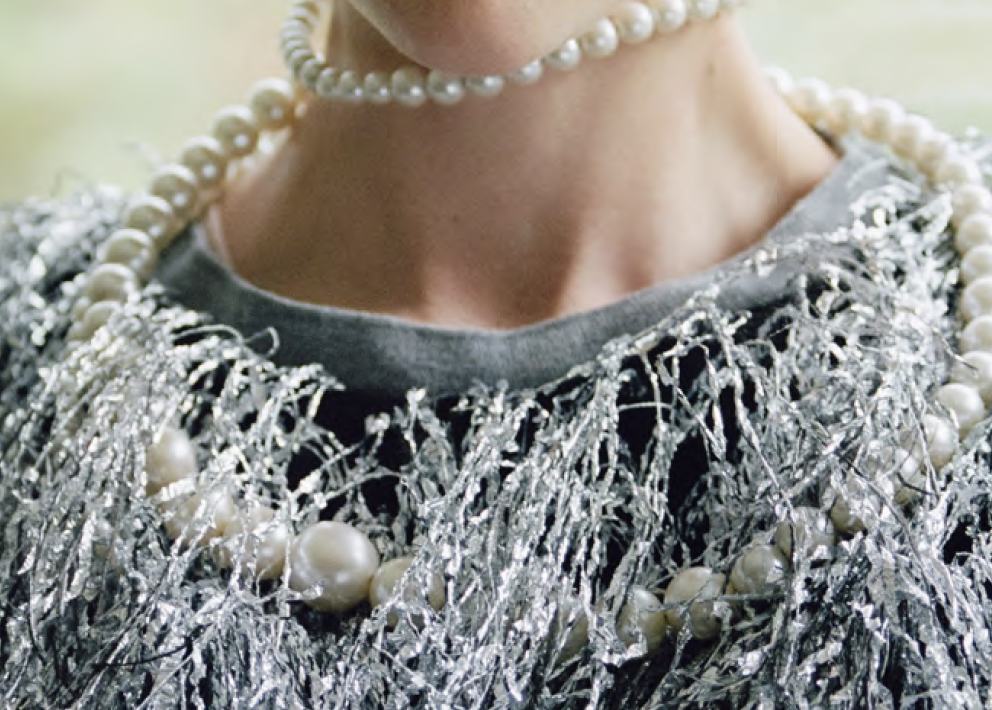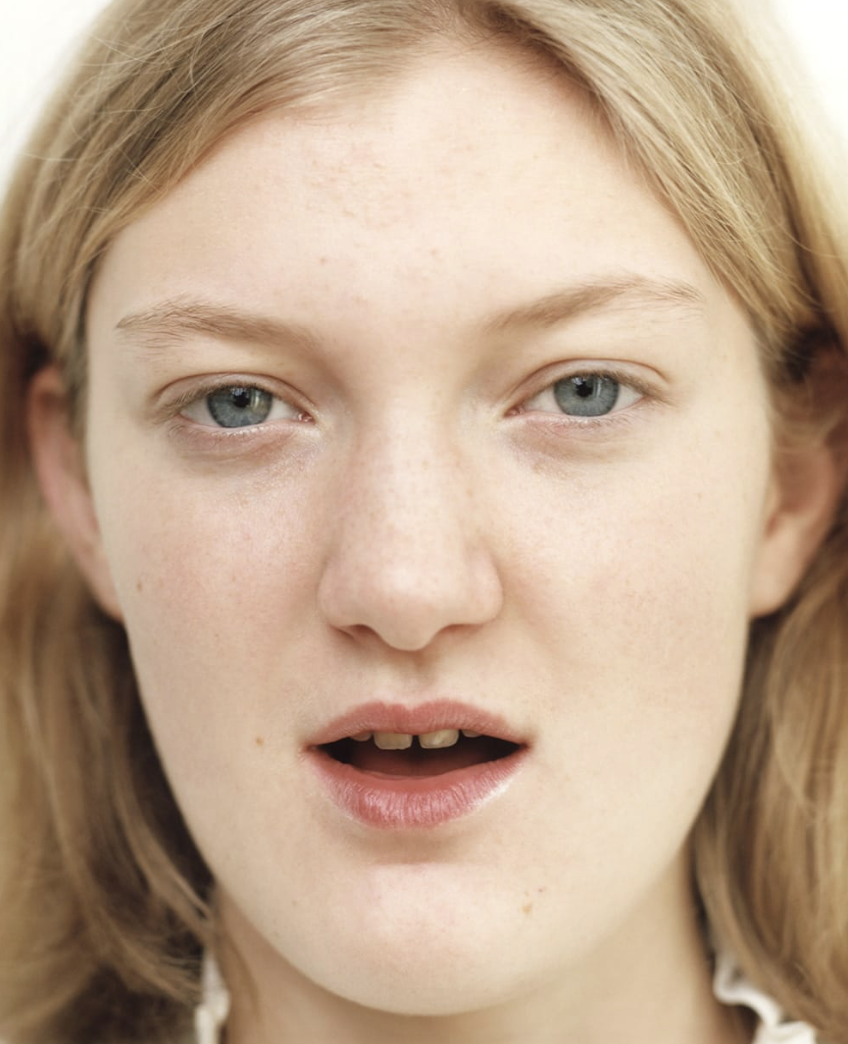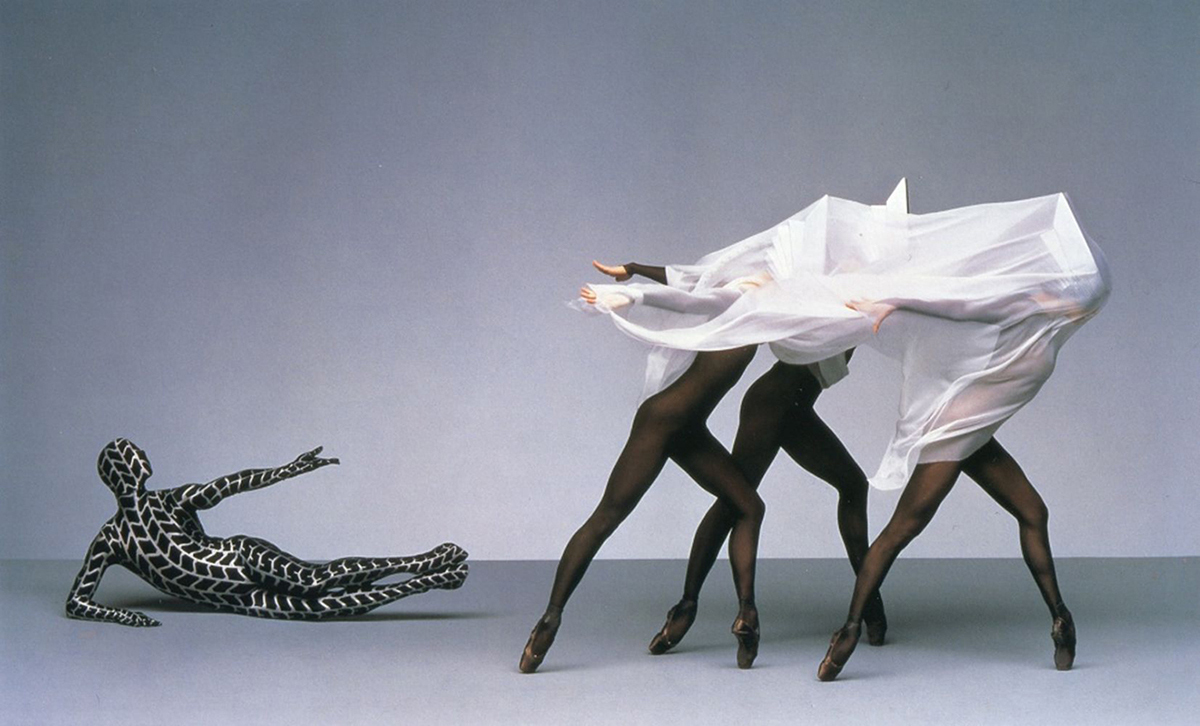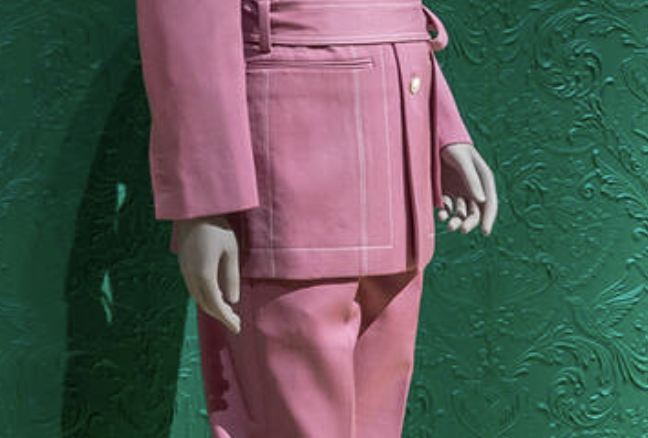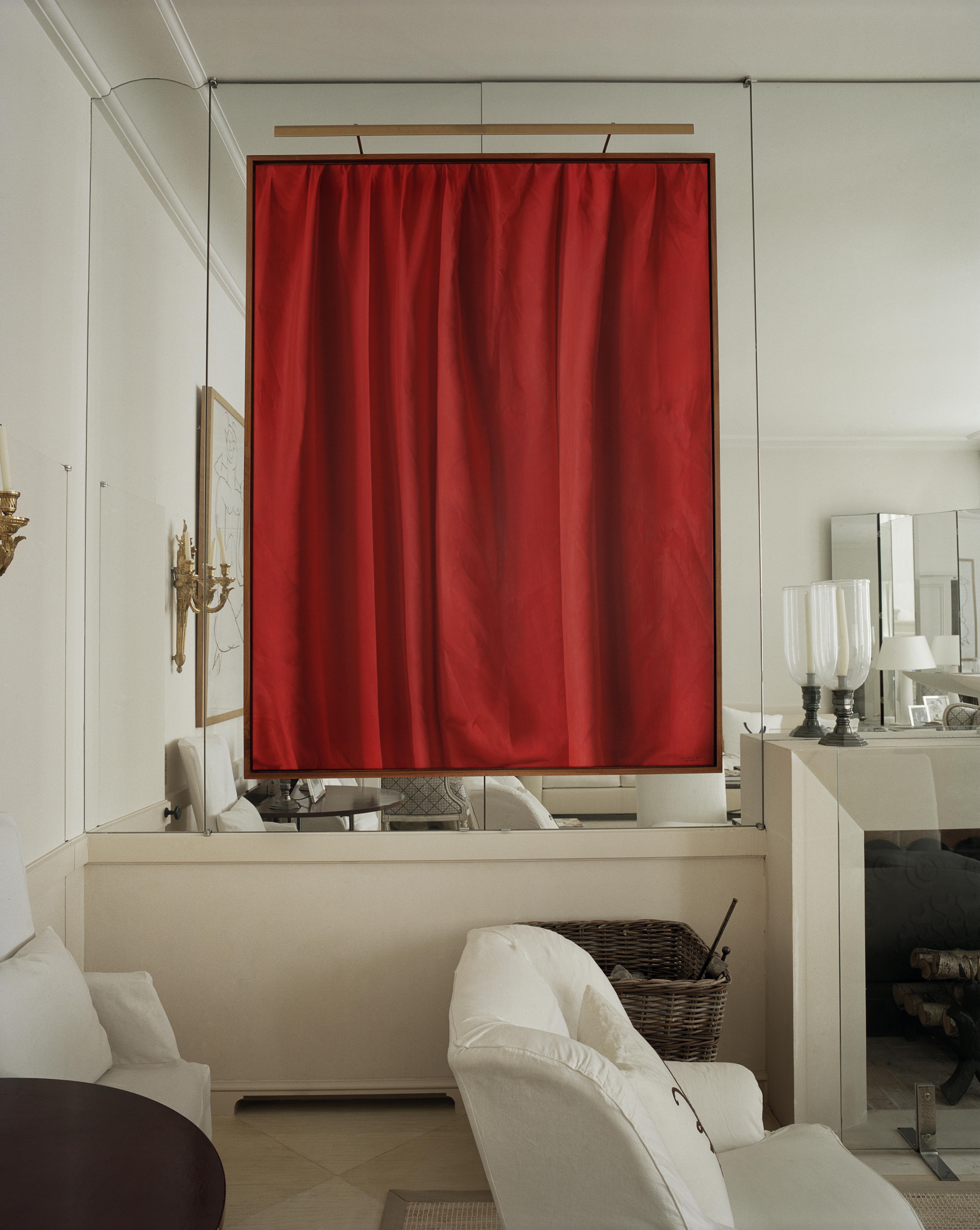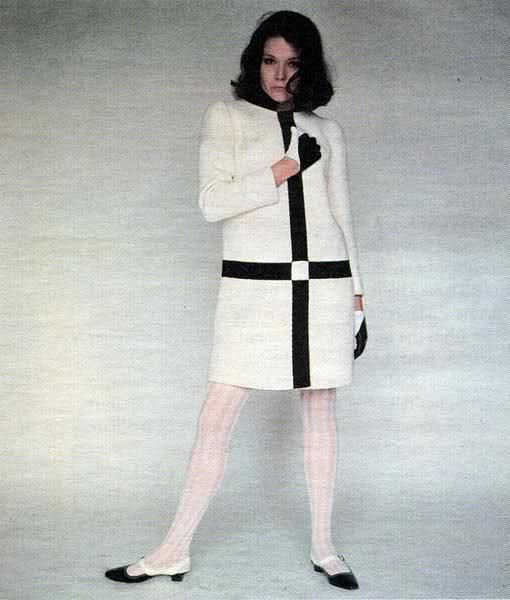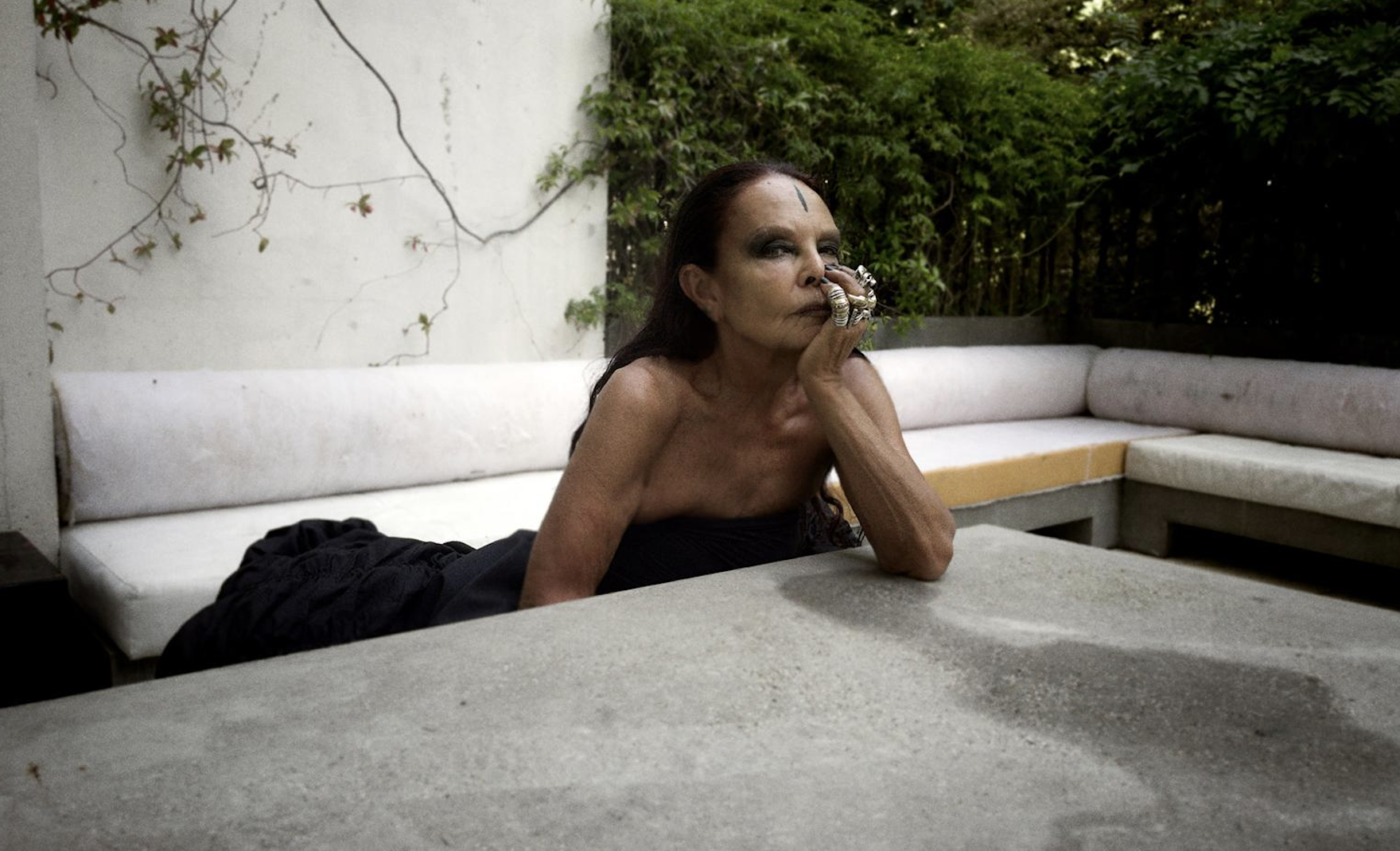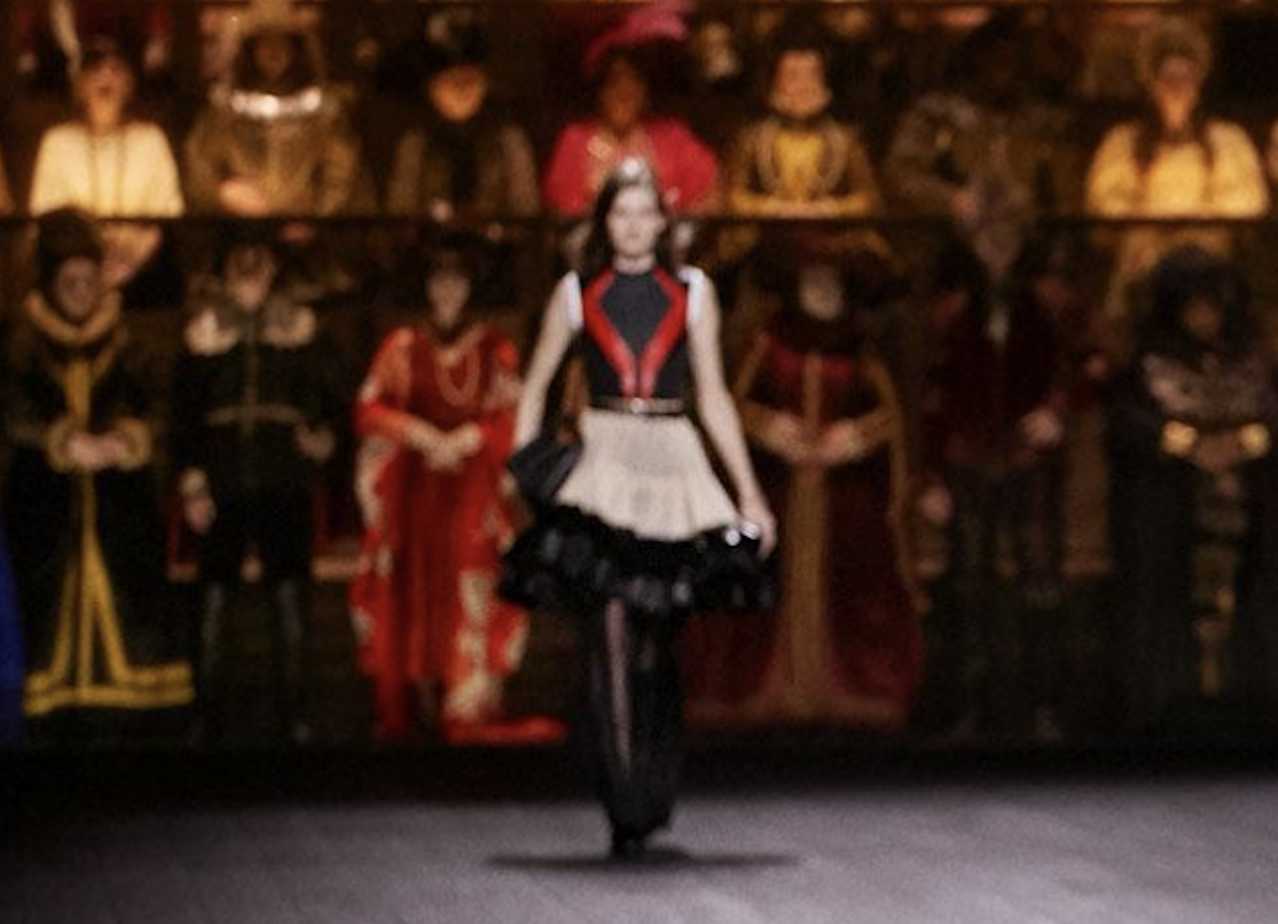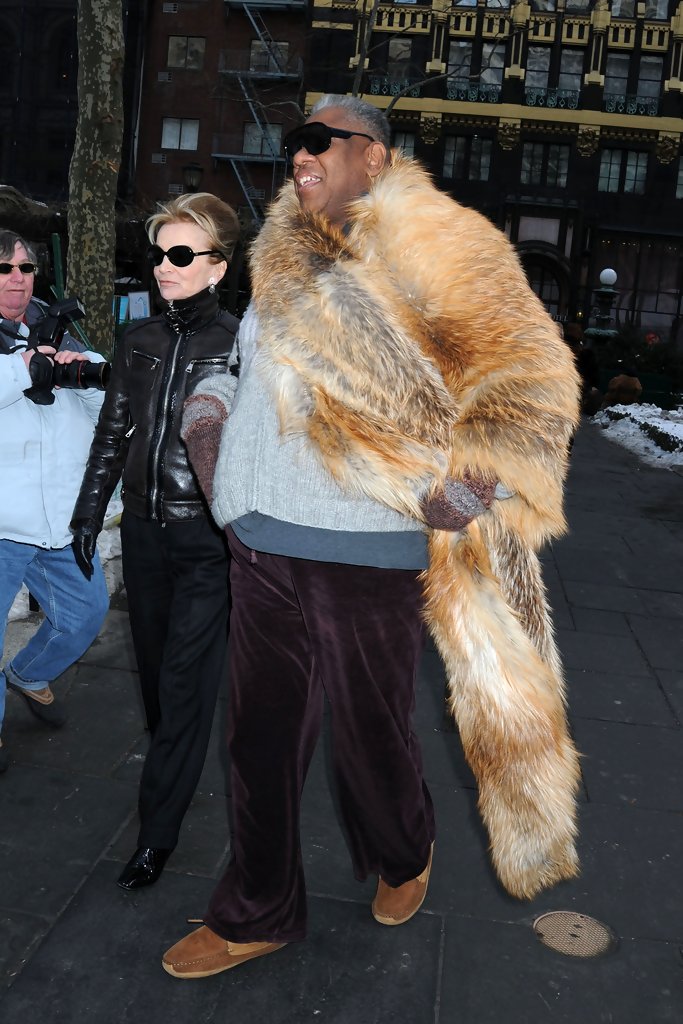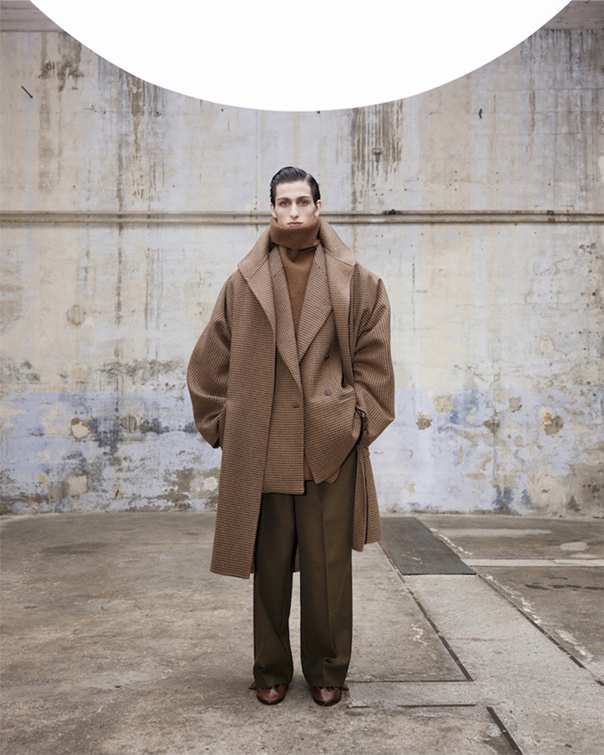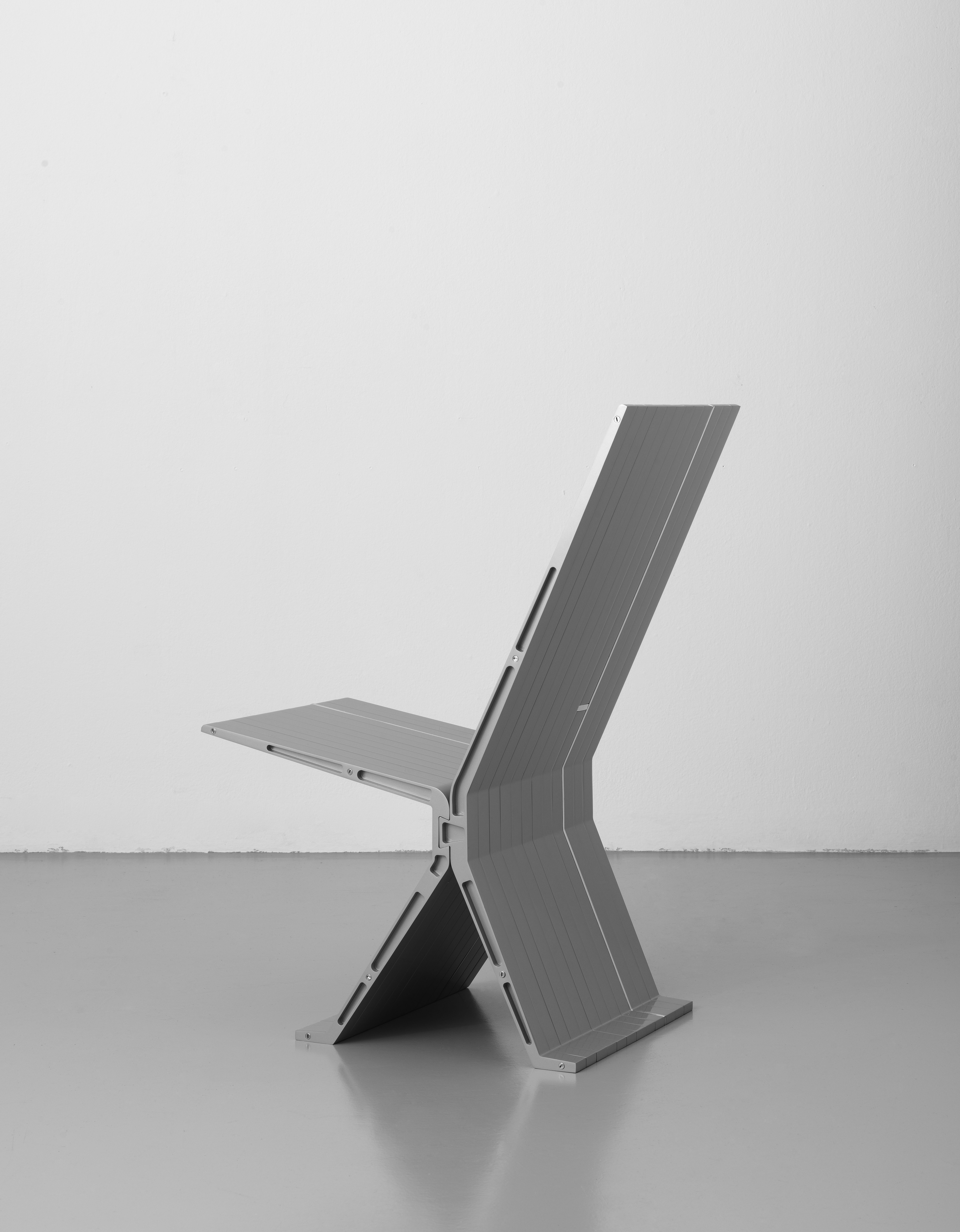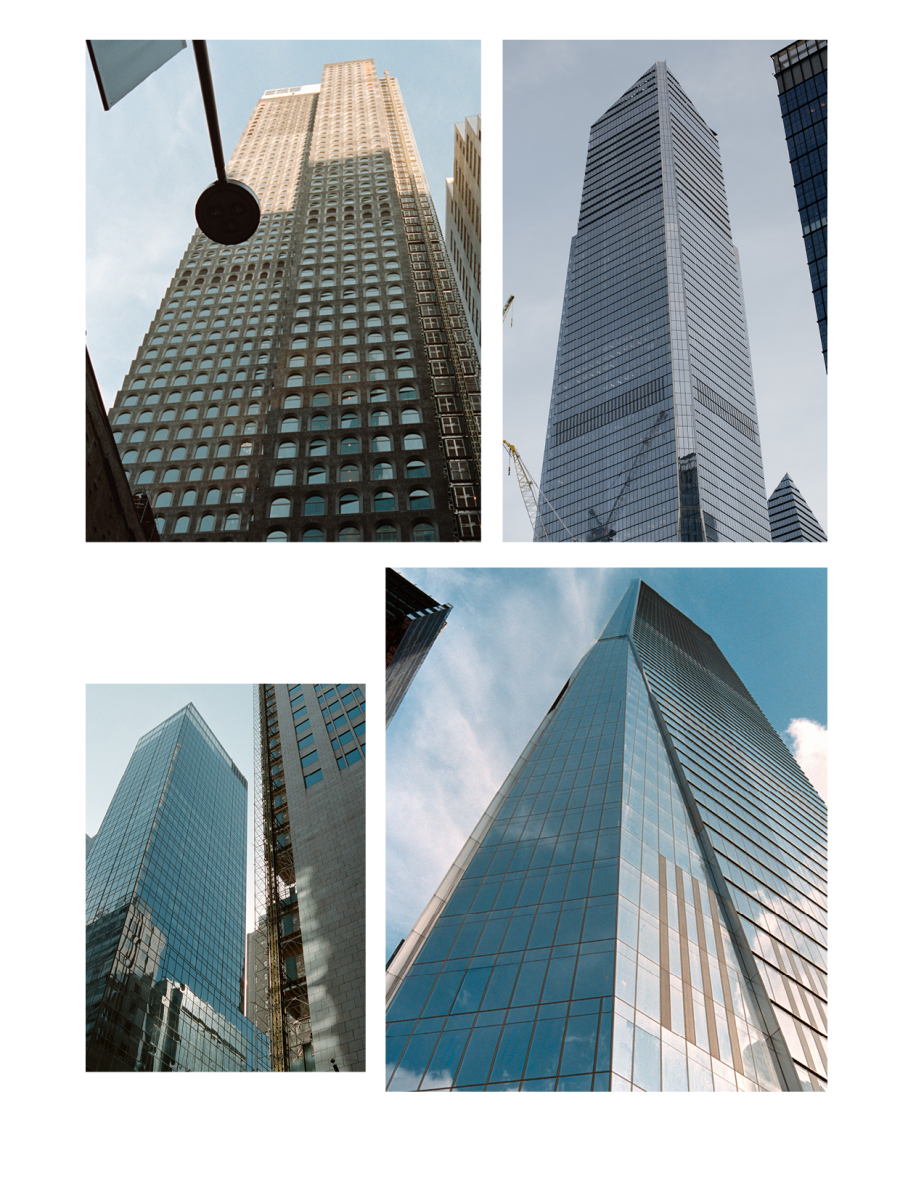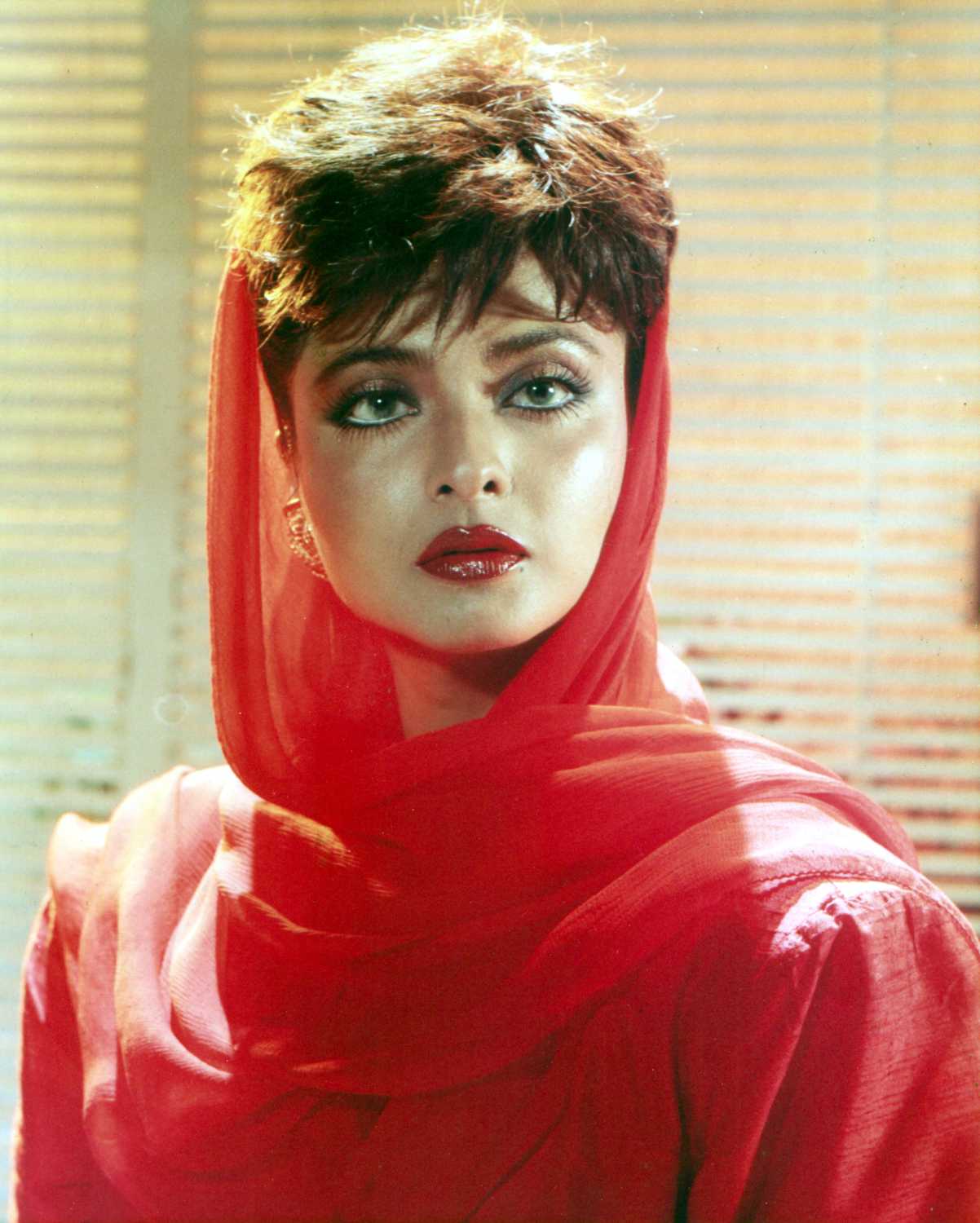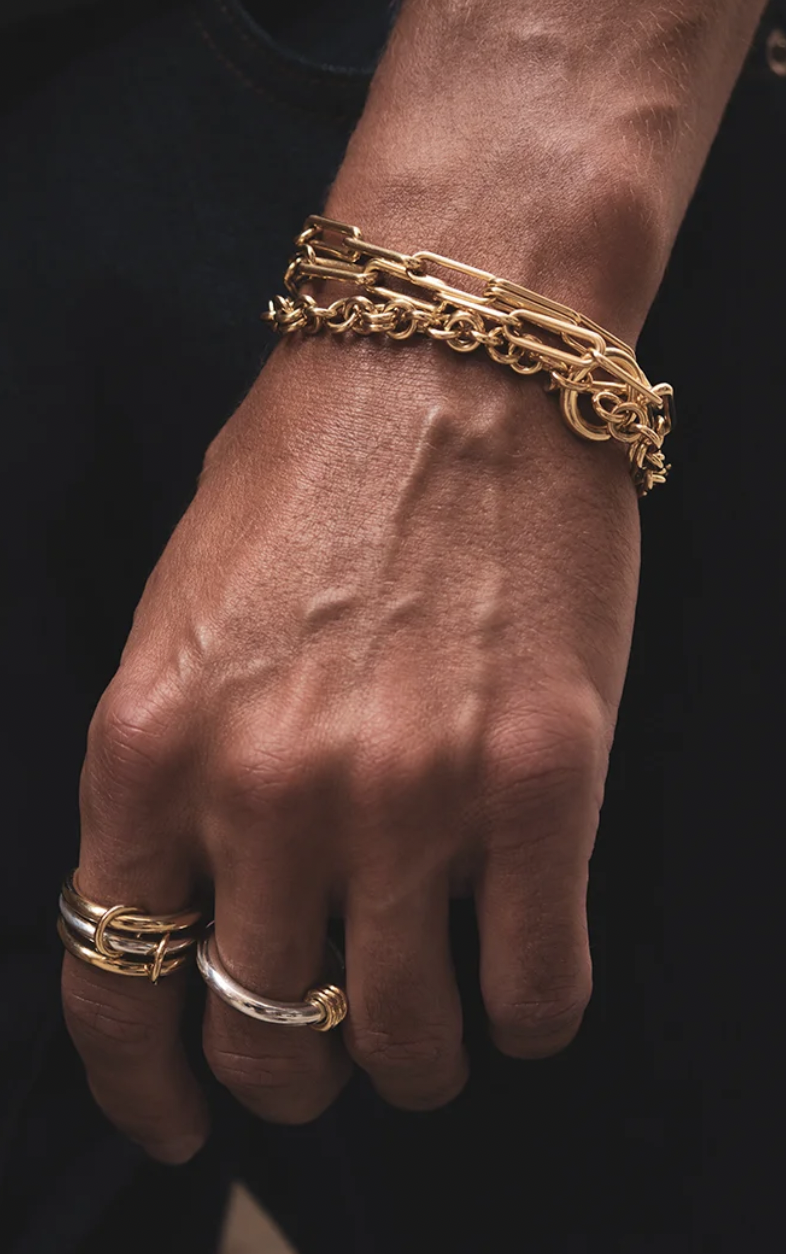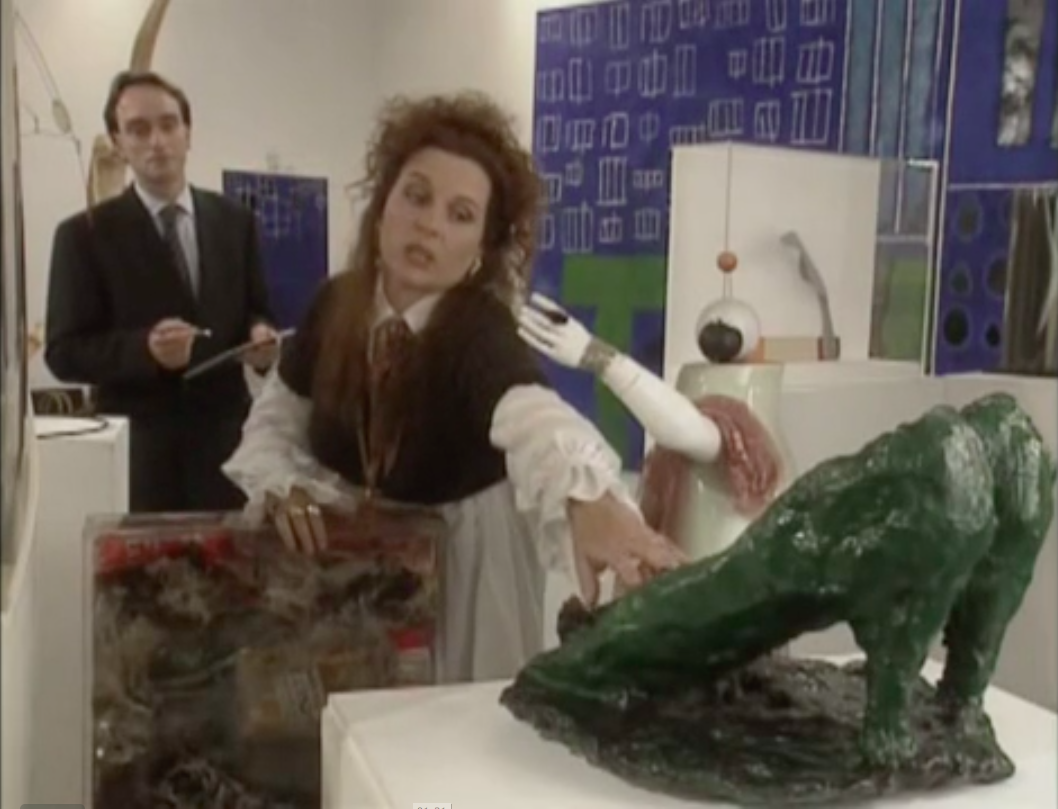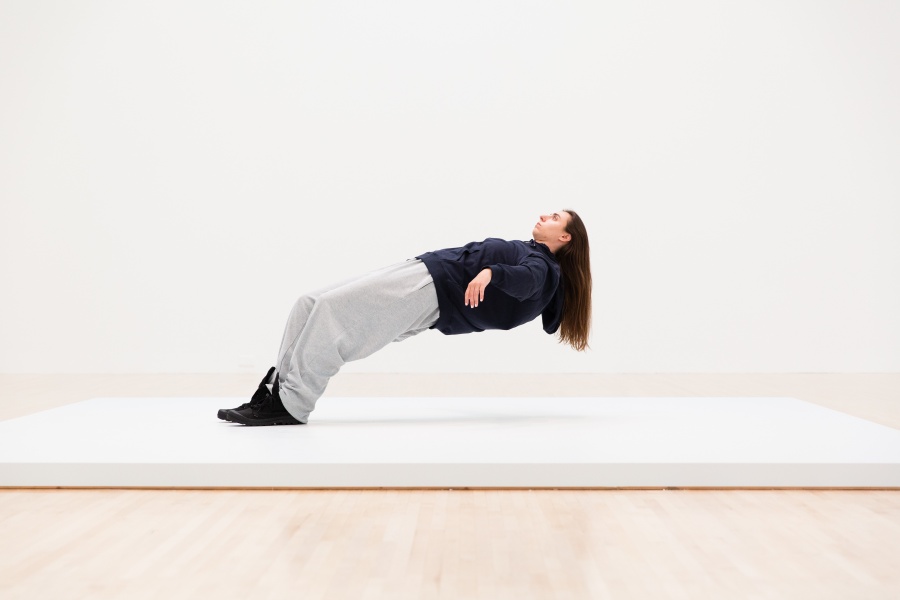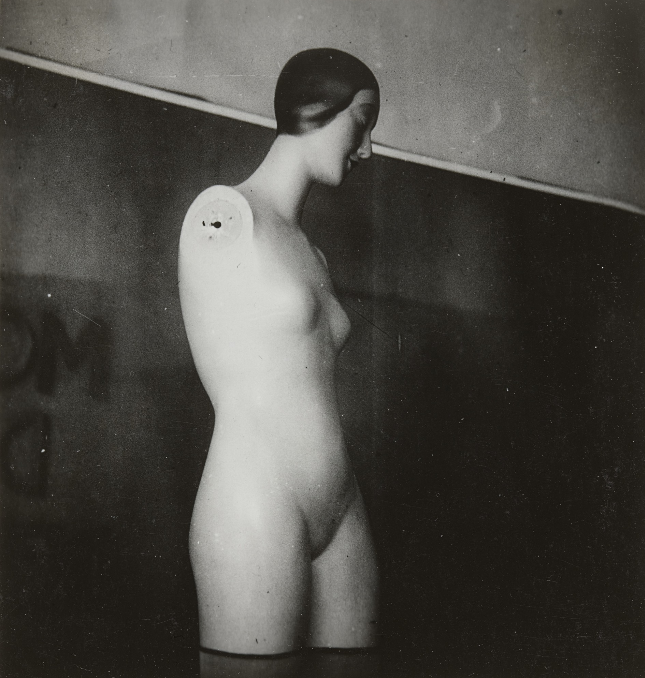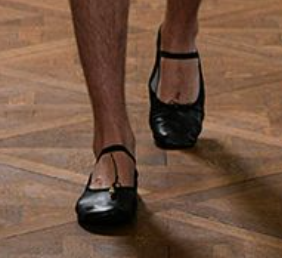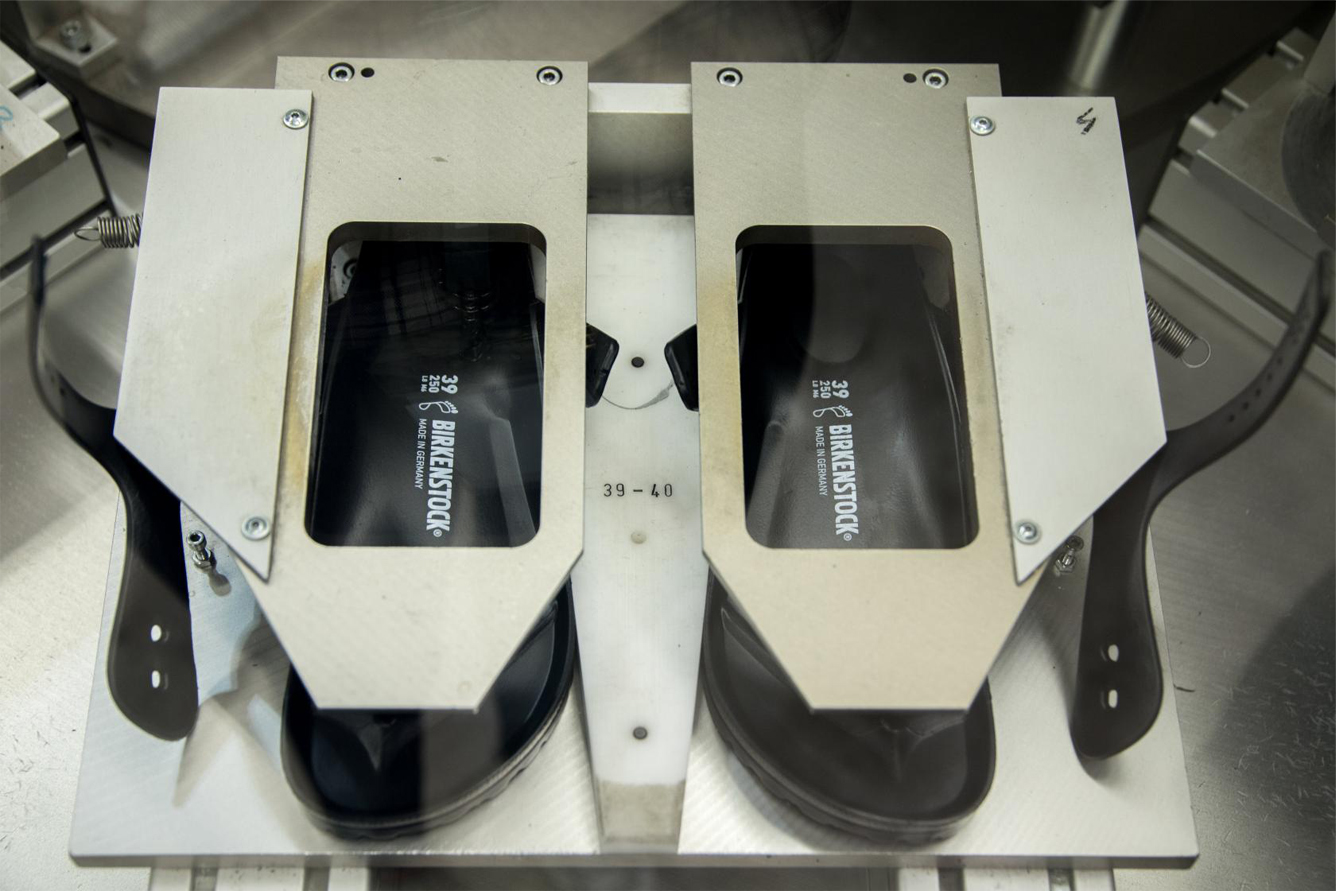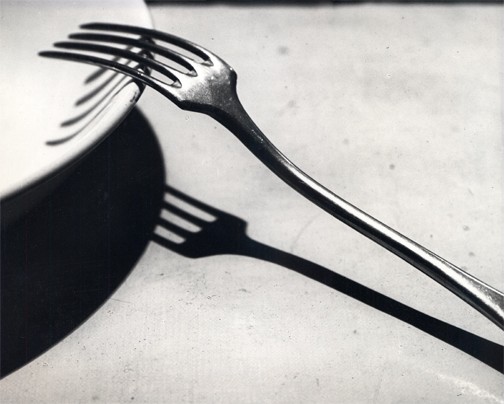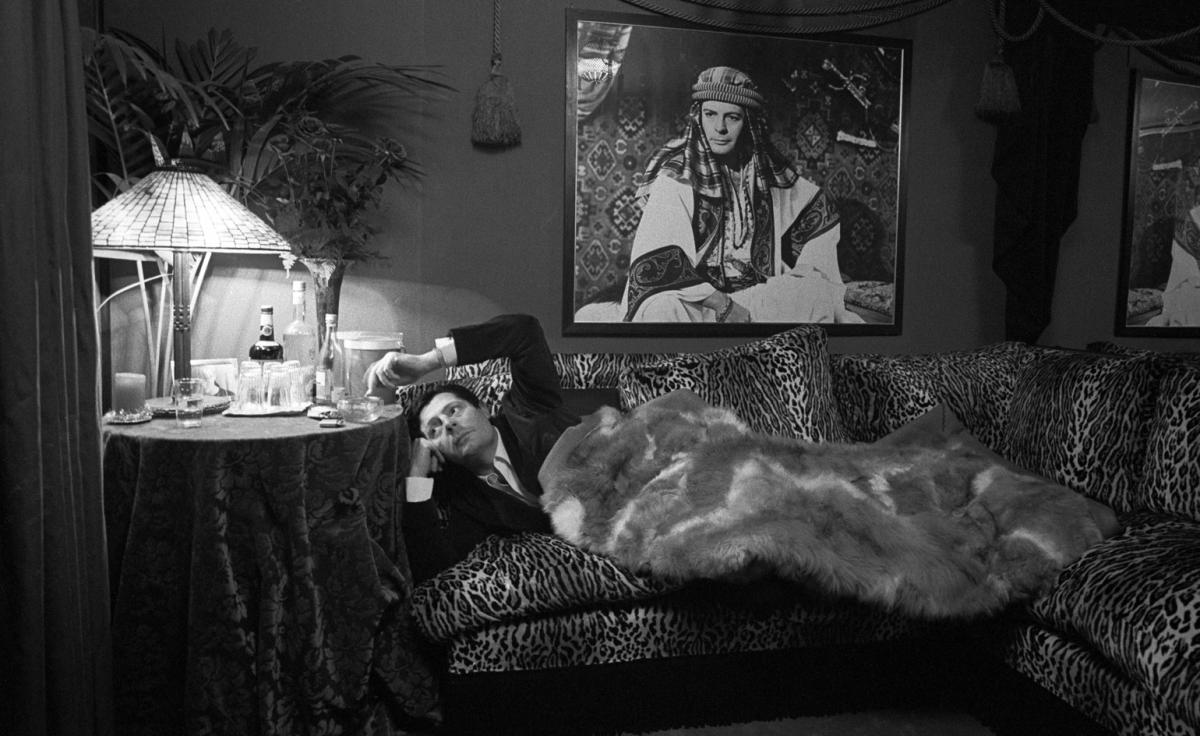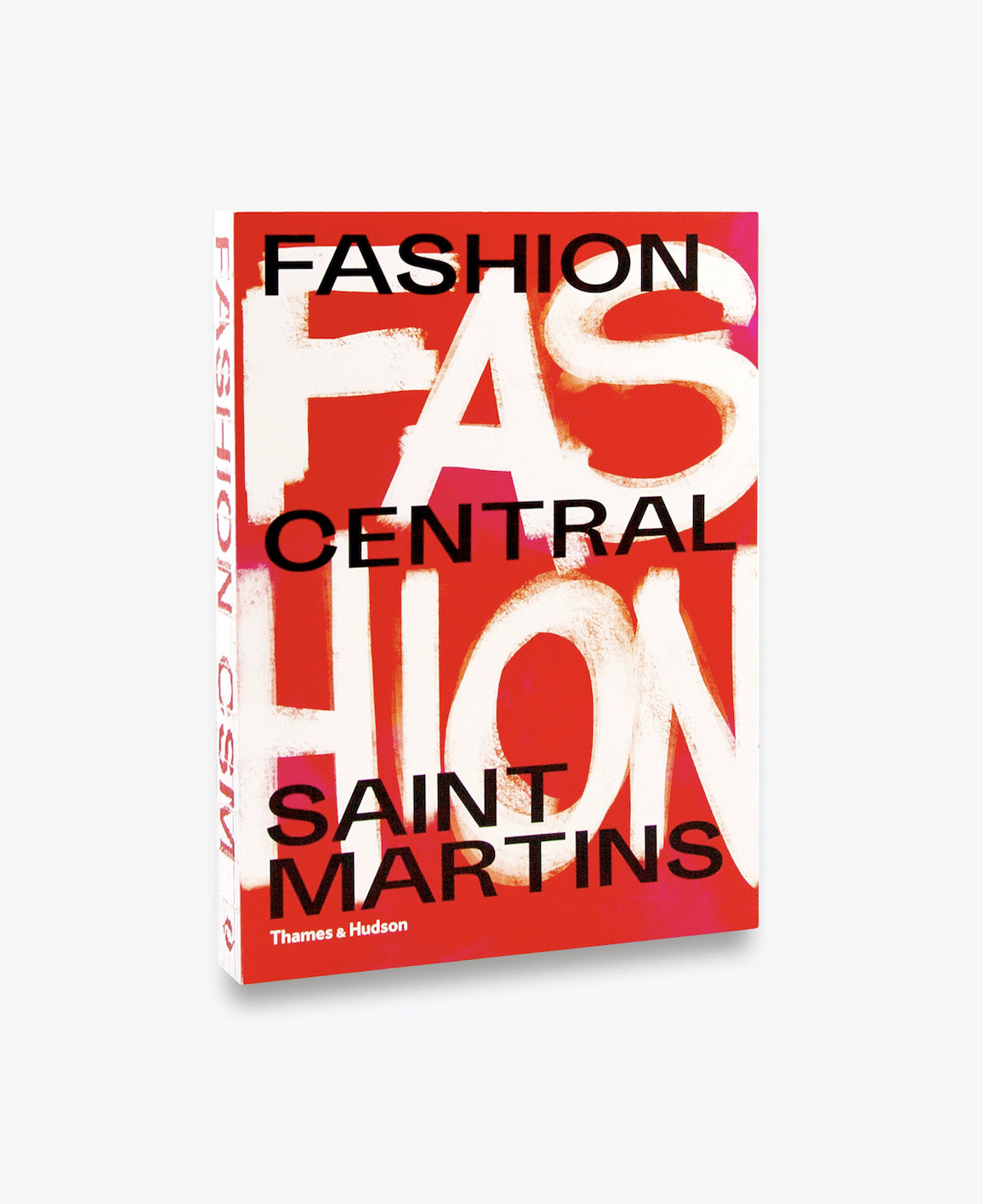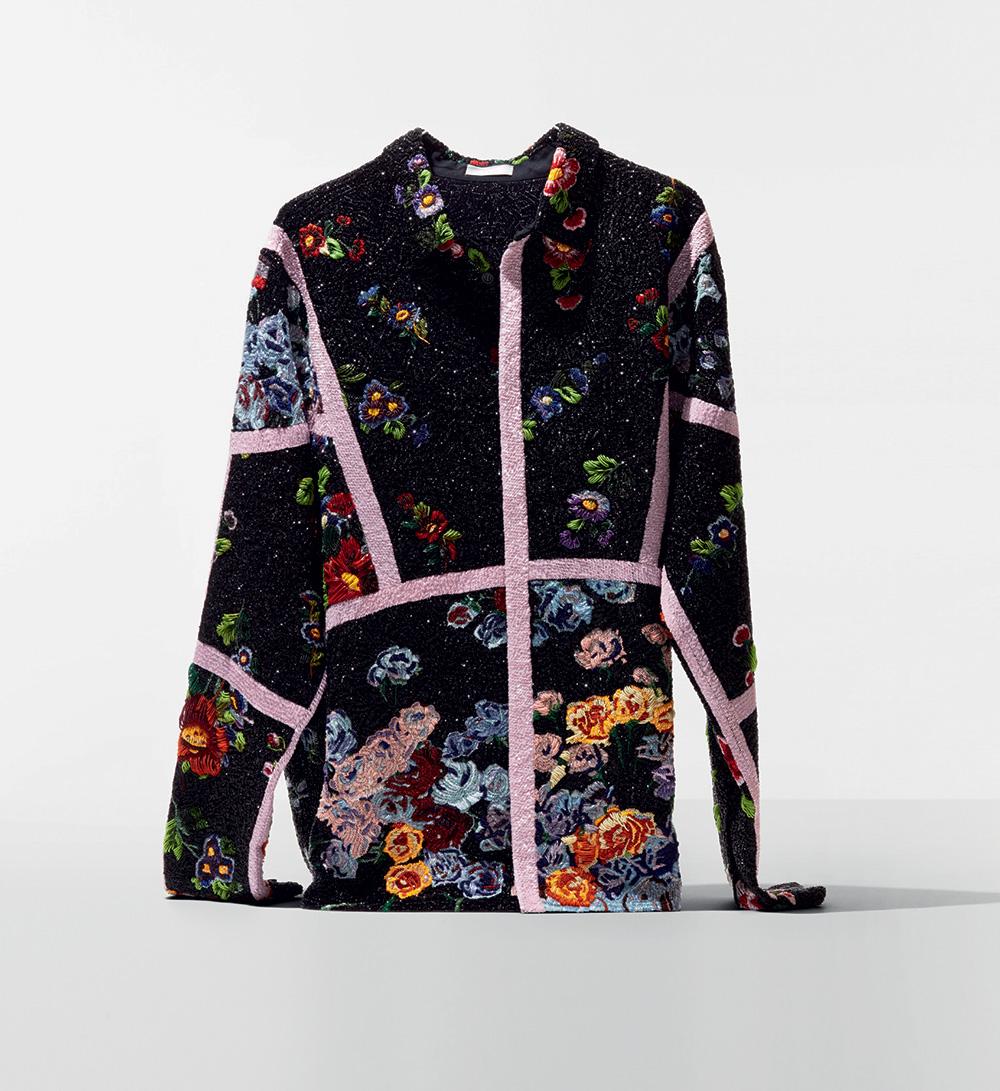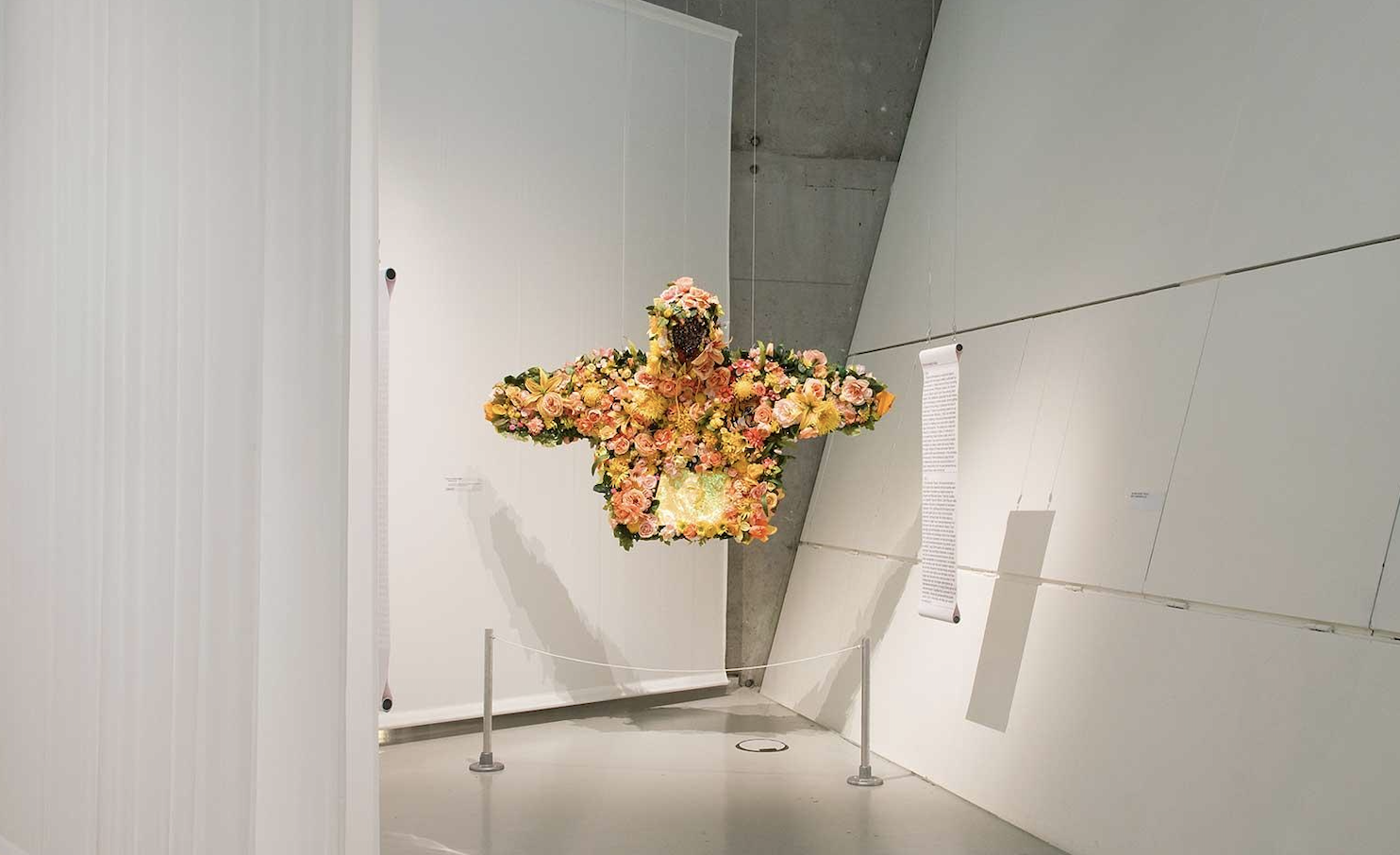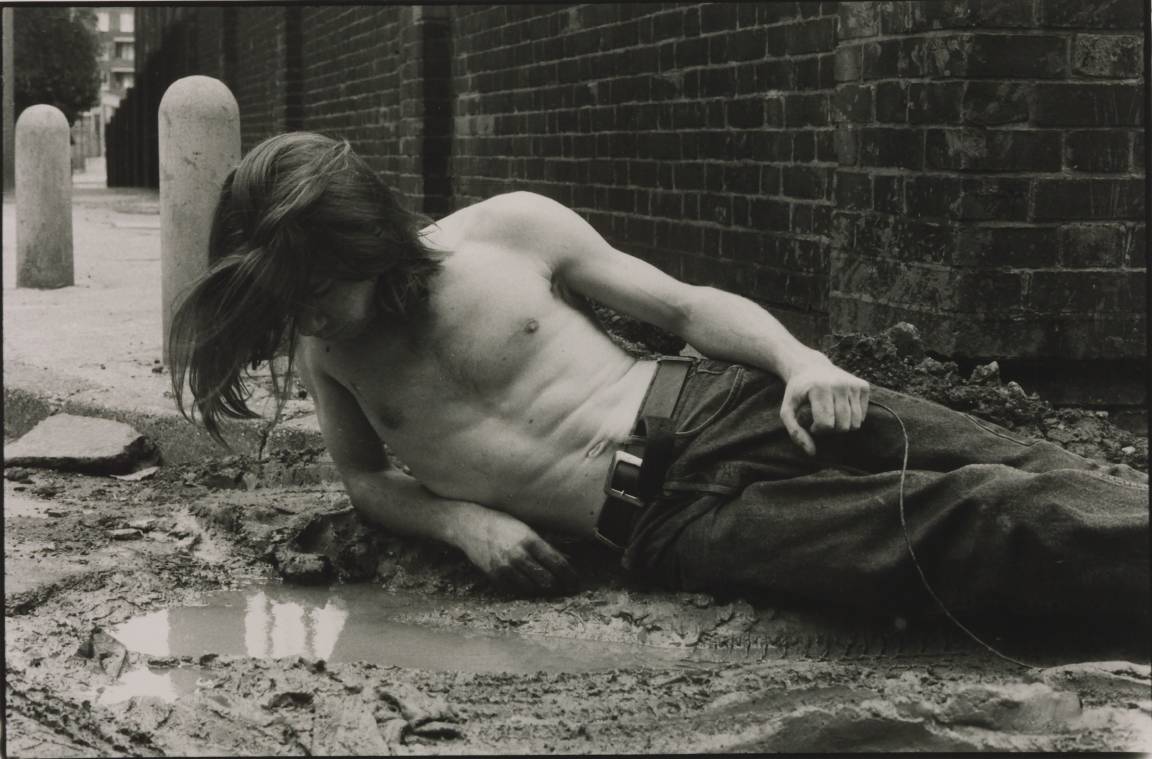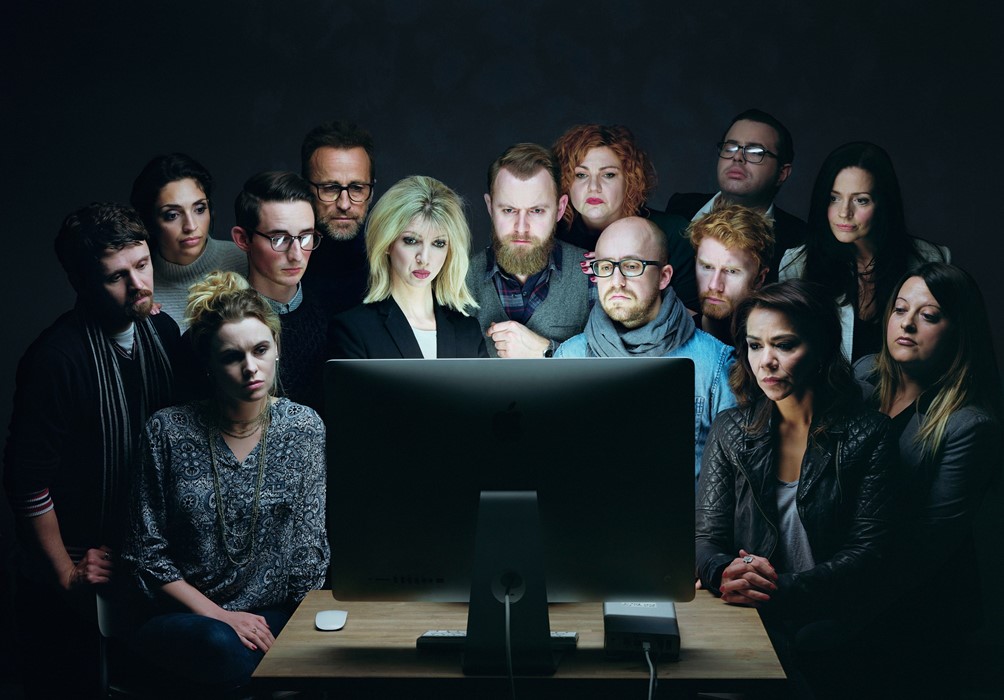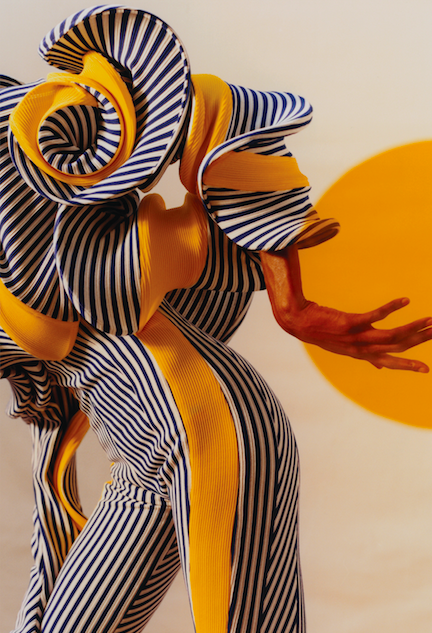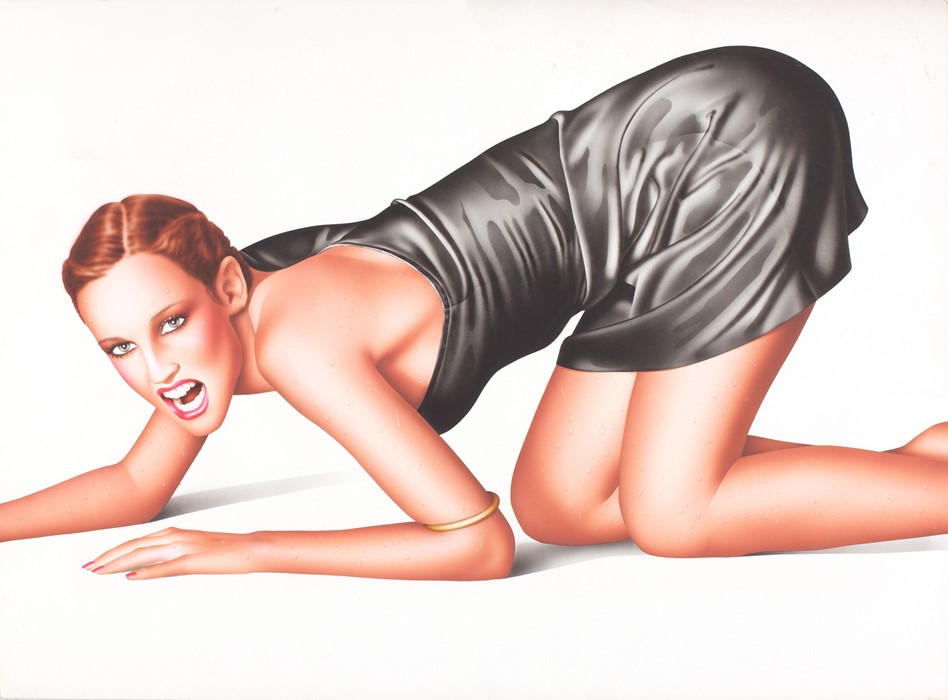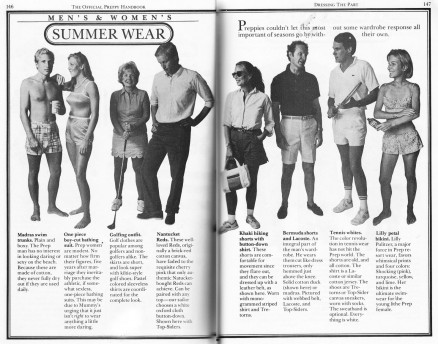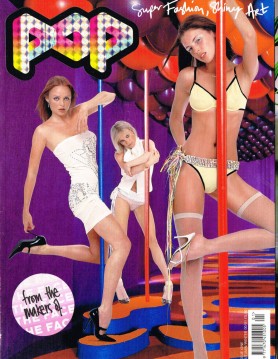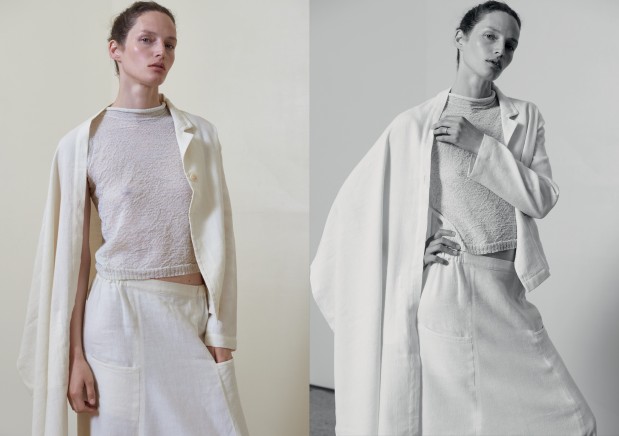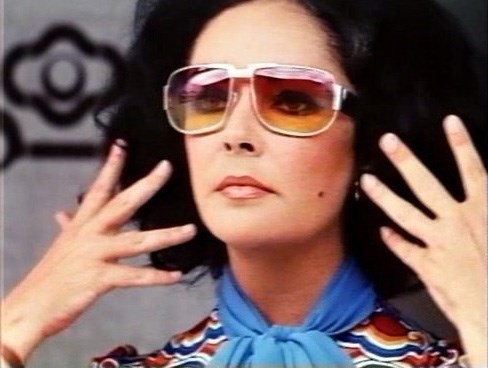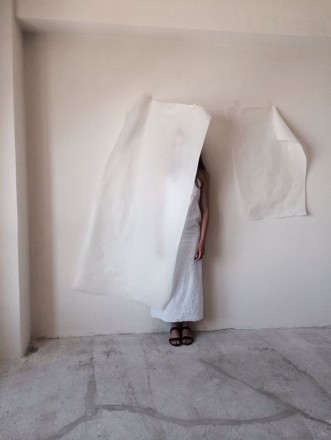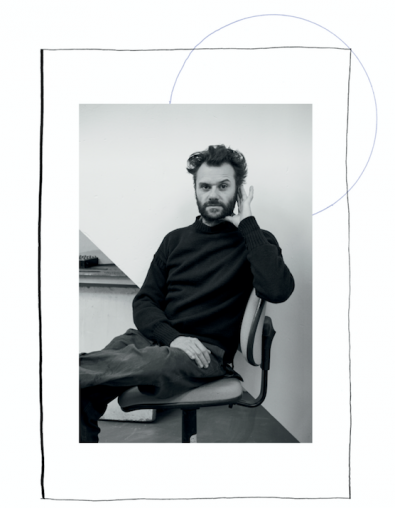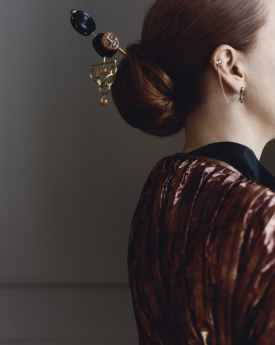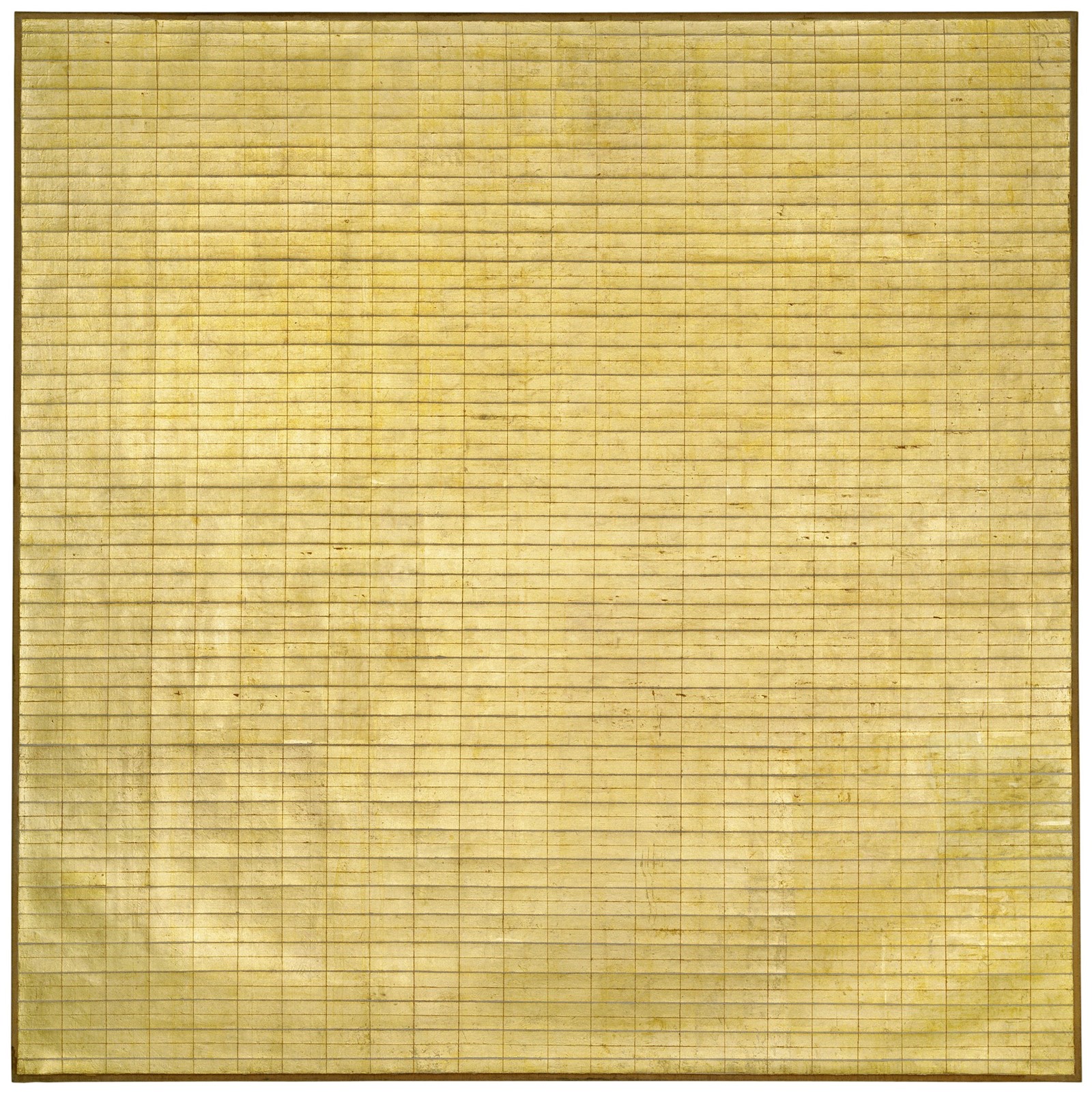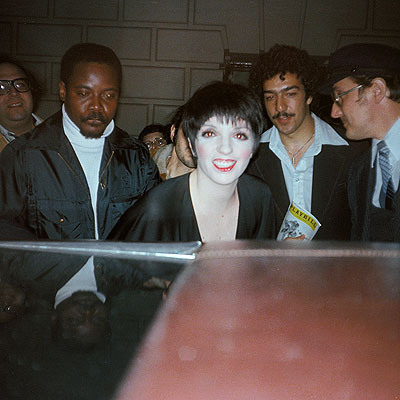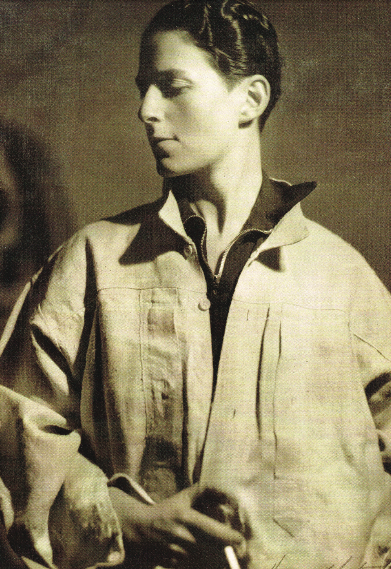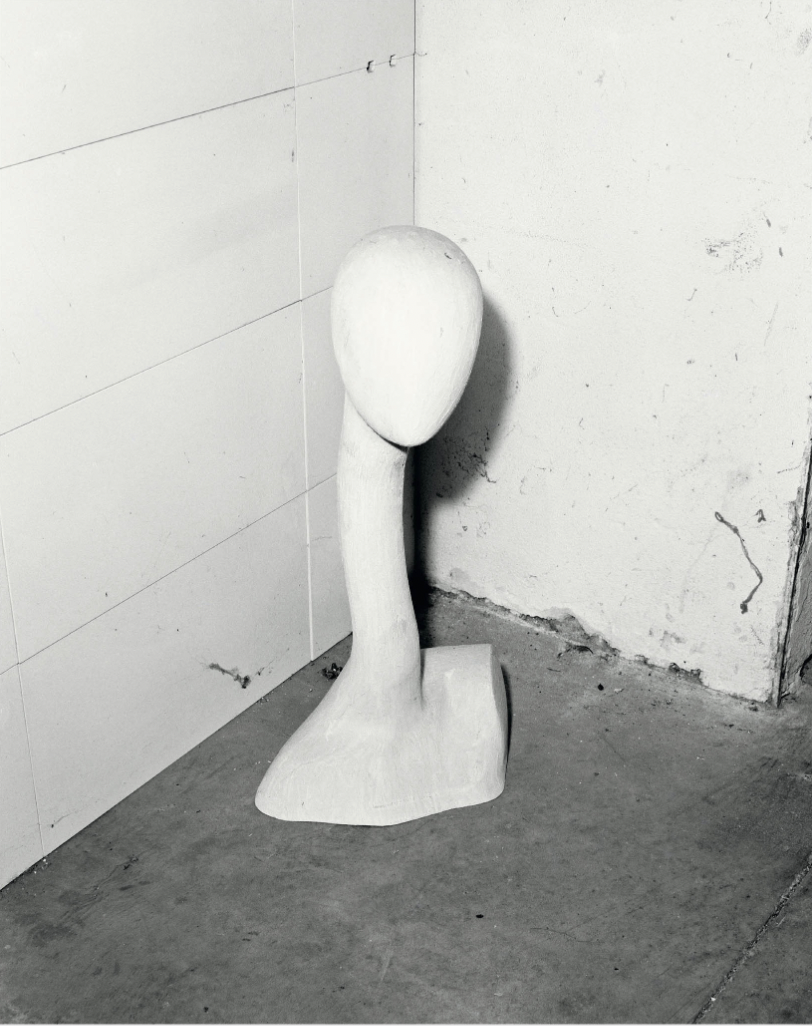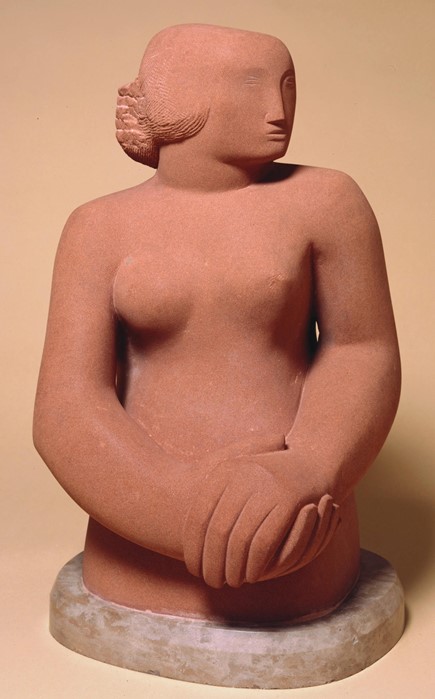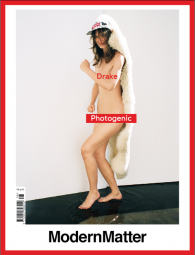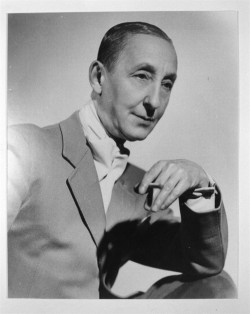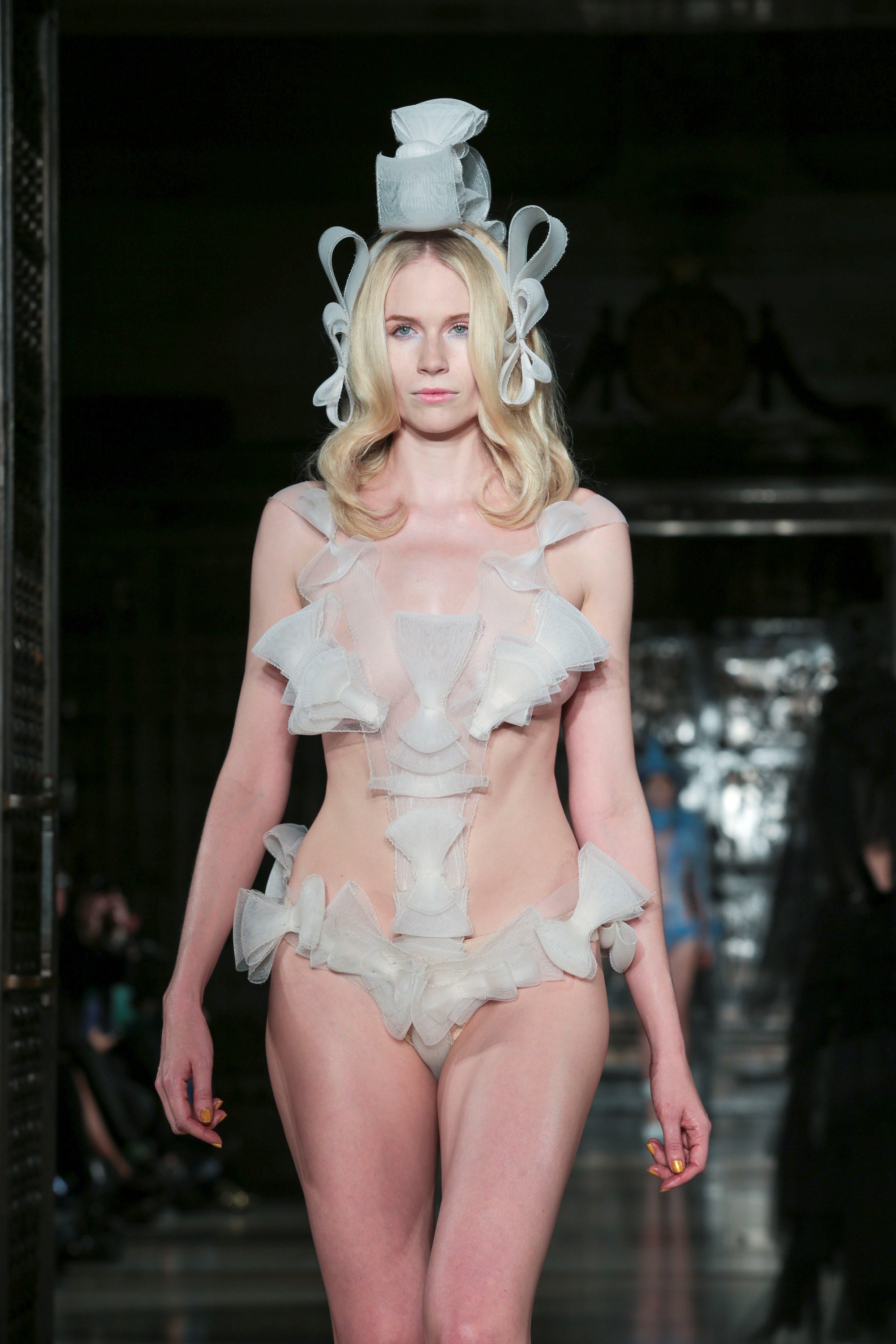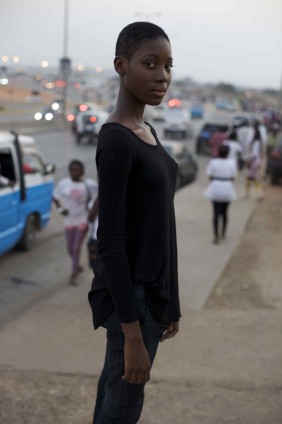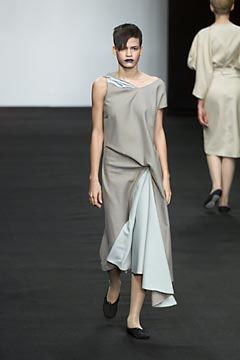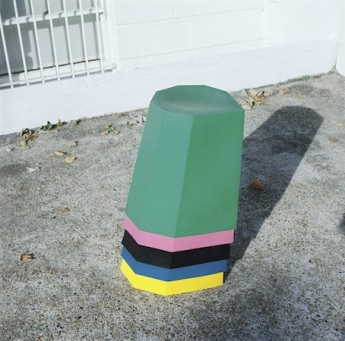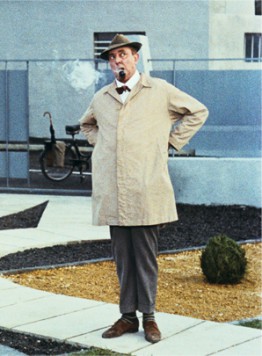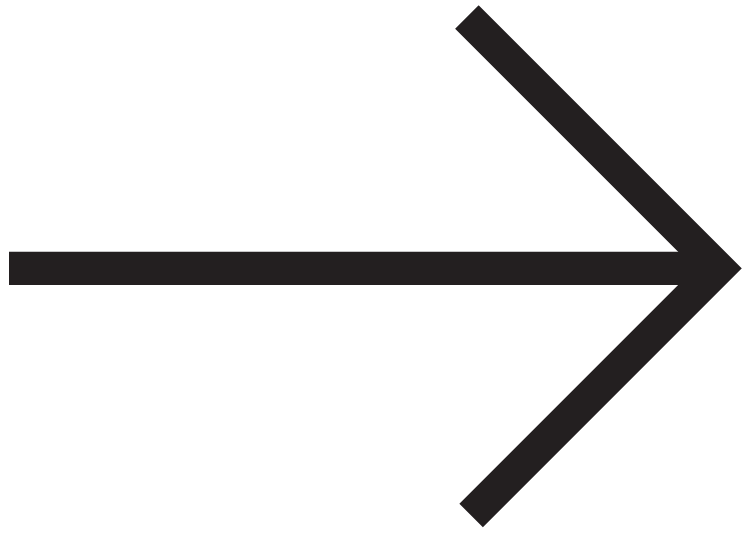2014
Julien Simshäuser
Published in Metal Magazine N°32
Virtual Insanity
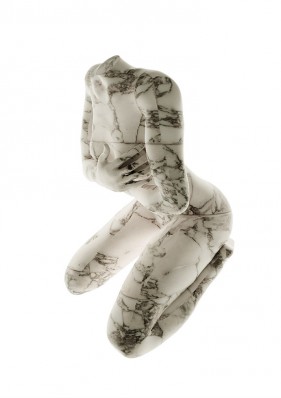
The work of London-based Motion Designer, Digital Designer and Director Julien Simshäuser traverses fashion, art, music and film. His 3D illustrations, graphic art and motion designs are rooted in the belief that digital technology can, and should, go through all of our layers of perception. ‘I hate the idea that we are restricted to a still image,’ he says. The visual should be tangible and the virtual more immersive.
A graduate of Visual Communication at Bauhaus University in Weimar, Germany, Simshäuser is part of a generation that was the first to grow up with the internet. Today, leaving behind his peers, he is eagerly searching for the sort of realism that only a computer-generated world can provide.
Dal Chodha: In recent years I’ve become more and more fascinated with the way that we’re engaging with images. I think that we’re bombarded with too many. We’re over stimulated and our brains are being fried! Do you agree that there might be just a little bit too much around us right now?
Julien Simshäuser: I don’t think that there are too many things around us, no. There can always be more. I think it is so important that anything being published right now is not being integrated into our network. So much isn’t and I think that is a shame. It means that there are gaps in our digital archive and that’s not good.
DC: Accessibility means that we can watch a rare Hitchcock screen test or click through a set of photographs of Paris in the 1800s and then watch a documentary made in the 90s about the punk movement, which is great but I think that all of this can be problematic too. If there is no hierarchy to such access, then don’t we run the risk of creating a flat, generic visual culture? The need for us to challenge and interrogate notions of taste, gender and politics has become somewhat superseded.
JS: Our interpretation of these images hasn’t changed. If something is widely available then what happens, and what is happening, is that the people who have access to it look at it get inspired from it and then, remix it. We are making new things quicker and with a more diverse set of references now. We’re melding disparate things together in a way that is harmonic and pleasing quicker and quicker now, which is amazing! Because of this information overflow, we are experiencing so many new things and in ten years there will be even more new things that will make it even more amazing. I see it as a huge positive.
DC: But doesn’t any of this stress you out?
JS: No, but I do think we have to develop a sensitivity to be able cope with it, which is different to ten years ago when we had to be more open to change. Now, we have to shut our doors in order to filter things. It’s about being more selective but at the same time publishing everything so that we can curate it into new outcomes. That’s becoming more common. What I don’t like is the way we are able to consume this amazing time we are living in. We are restricted by technology. Small, dull computer screens restrict us! The technology needs to advance much more in order to get our lives in-sync with what is going on in the digital world. It could be much more immersive. The datafication of things is great but our screens are flat and not really emotional. It would be amazing if we can touch things and feel things in real life whilst benefiting from this global archive.
DC: Do you think we should be going into a virtual layer or something in order to give us new experiences of the world?
JS: Yes! An immersive virtual experience that we can feel and interact with – something that feels physical but is totally created. Imagine walking through 100-meter high waterfalls in a lush, bright green valley and seeing people who are ten times bigger than you, all speaking a strange language. Imagine being in that space and then bumping into people you already know there. It could be totally abstract and still feel real. It isn’t flat on a screen.
DC: Something in-between The Sims and a contemporary art installation?
JS: Everything mixed together!
DC: What are your thoughts on the virtual reality we do have access to right now? Kim Kardashian’s Hollywood app has proved to be so popular, which I find both intriguing and depressing in equal measure. Have you ever engaged in any of these platforms?
JS: They don’t really exist in the way that I think they should. World of Warcraft is probably the closest thing, but that’s really tailored to being a game and isn’t a creative playground or a social space. You can only walk around and kill monsters. Ideally we should be creating an extension of our real world, rather than replacing it. I know it might sound a bit spacey but there should be something that allows humanity to grow inside a matrix. Look at the human condition: we over consume and we are overly ambitious and we destroy our planet. In a way, I think if we do all of the things we are currently doing but in a virtual way, it won’t destroy our planet anymore. We would have the illusion that we are fulfilling our needs, rather than actually consuming so much that it creates an inequality and a lack of balance.
DC: But what about the effect this would have on mortality and on humanness? Walking over to meet you, I was looking at everyone staring into their phones all making sure to avoid making eye contact with me. Everyone seemed so lost in their own digital space. They were all in their ‘other world’. They might have been interacting with 26 people all across the world on their phone, but they’re unable to connect physically to the person standing opposite them. Surely what you are proposing would be a bad thing for us as human beings even if it would be good for the planet? What did you think of Spike Jonze’s film Her?
![]()
JS: Well, I watched it. And I don’t really have an opinion on it because I think everything in the movie is feasible and I don’t think any of it was necessarily bad. It was a replication of how we are living our life in the here and now, like you just said. It was like real life.
DC: So Her wasn’t about the future at all, like some said. You’re right. It is our reality. It might seem like a stereotype but when we think of the gaming community, when you see people who dedicate their days to playing games online with people on the other side of the world, they always seem to be the same type of person. They often look the same; seem to be socially awkward or shy. These are normally people who do not deal with the real world as much as they do the virtual. Isn’t this a taste of what could potentially happen to all of us if we did run into virtual reality in the way you are saying?
JS: The main issue is about how your body can be satisfied in this other virtual space and that came up in Her. I can see it amongst my friends. They work very hard, putting in a lot of hours in front of the computer and at the end of a day, they are really happy with what they have done but they cannot sleep at night. They cannot sleep even though they are really fulfilled and that’s because their body doesn’t get gratification from their work.
DC: Right, so even though their mind is absorbed by their creation, the physical awareness is lacking?
JS: Yes and I have no idea how we sort that out to be honest. It’s a big problem. When the visual and audio and alternative meet, the physical aspect becomes, I admit, a little fucked up.
DC: You’re part of the generation that remembers the arrival of the internet so you understand it within context and you know what the internet can and also cannot do for you. But the generation behind you haven’t experienced that. They blindly go into the web and run the risk of getting lost in it.
![]()
JS: It has become more natural nowadays to consume something that is incomplete or unfinished.We end up with this compromise in a way and we have to remember that we only exist in our time; afterwards everything will be different again. I think the way we learn is different nowadays and I think the system of school and traditional education has gone. If you think about how we get information, we learn from our own interests after searching for them. It’s a very specific way of learning, which I think is amazing. This is what the virtual world offers.
DC: Schools seem to be a bit out of sync I agree. The curriculum feels outmoded. We don’t have to have intelligence in the same way anymore. All of us can answer a question correctly on some level because we know where to get the answer. My issue is more with image making and aesthetics, fashion, style etc. I’ve heard it so often, the complaint that everything is beginning to “look the same”. If we’re all sharing our references then how can visual culture progress? It all feels so self-referential. So repetitive.
JS: Do you think everything is uniform nowadays? I don’t think so.
DC: I think it depends on where and what you are looking at.
JS: I think it is quite complex. There are quite a lot of different styles going on and maybe in the fashion world there is an established look, but you can still find other things. Fashion is limited because we only have clothes as tools to express ourselves. As soon as there is another layer of how we can express ourselves that will change.
DC: But we have tattoos, piercings, body modification. Hairdressers! Few are pushing the boundaries using any of these mediums. So much science is available and people don’t want to use it. When I spoke to Nick Knight for the F/W 2013/14 issue, he said that he was continually surprised that we can do anything to our bodies right now, but everyone wants to have the same nose. More people want to conform now.
JS: Everything is globalised. Large corporations have more and more influence on what we see on the internet and that’s one reason why things become more uniform and our global aesthetic becomes less diverse. They want to please everyone to make more profit and so therefore do not experiment with what they show us. At some point, there needs to be an established social network based on peer to peer connection rather than connections that are centralised on servers owned by big internet companies like Google or Facebook and Twitter.
DC: Our references are now centralised too.
JS: Since I was very young, I’ve spent a lot of time trying to find a special way of visually trying to express myself. It started with still images, drawing and then typography and graphic design. I started to expand it by looking at styles and then how people engage with things so I naturally moved into looking at interaction and animation. They offer another layer, which I think is key when thinking of new ways of expression. I hate the idea that we are restricted to a still image. People have explored this and we’ve been restricted to RGB colour space and OpenFrame forever. I think film is something where you can find something special nowadays. Tumblr has shown everything already so we should stop tumbling! Why not do videos or Instagram time lapse instead? We need to be interactive. Just taking pictures of stuff feels so basic and there haven’t been many interactive installations either. I am interested in immersive environments that have been created using new technologies. I want experiences that go through all of my layers of perception.
DC: A more physical interaction?
JS: Imagine you have an artwork on your wall that adapts to your persona, like a good friend, or you have a piece of clothing that does the same. Exploring these new layers of things that alter and change, rather than having one restrictive form. That is what I am interested in.
DC: I visited the Barbican Rain Room designed by Random International in 2012 and I was depressed to find that when confronted with such an immersive, sensorial experience, people naturally document it with a flat photographic image. These flat images then become keepsakes of the experience.
JS: That is really restrictive, yes. These installations are not accessible to many people and that’s why I think it would be amazing if everybody could have access to it through a device or technology that they could have in their homes. It’s really about having the technology working first and then we as artists can create something that everybody can make use of. This is the problem we face. We want to share a really amazing experience but we’re generally restricted by the system of image blogs that strip things down. Everything we do gets so reduced.
DC: What is the best immersive and interactive space you’ve ever experienced?
JS: I think a good example of this is the quadrotor drones that Memo Akten made for Meet your Creator in 2012. Marshmallow Laser Feast created a live theatrical performance using these drones that had LEDs and motorised mirrors and moving head spotlights. They created floating light sculptures that danced to music! That was immersive and transformative and a really good example of the mechanisation of our surroundings. In general though, what is the most inspiring to me is nature itself. I’m not only looking at things that have been created by human beings, but life around us. Nature is something that we can ideally strive to recreate. Imagine creating an atmosphere that would feel like you were walking through an amazing valley in a hidden part of the world, but then adding a human element to it.
DC: For someone so involved in the digital and manmade, I’m surprised to hear you talk about nature.
JS: Anything that takes over the whole spectrum of our senses is what I am interested in! That’s something that I think that Facebook should be doing rather than just providing text and flat images, which is so restrictive. That has really rationalised how we communicate. The world has become data driven and more about measuring things that can be documented. Our field of view as human beings is much more than just text and images and you can see all of that in nature.
DC: Were there any experiences growing up that have gone on to influence the way you work and think today?
JS: Well…the arrival of the internet of course!
DC: Do you remember the first time you went online?
JS: My mum had this Macintosh computer and I was hypnotised by its colour screen. I can remember using the first version of Paint. I was probably about ten years old. I was about 12 or so when broadband came in and I can remember my mum saying that we weren’t going to get it and I cried and cried and got my way. I was also playing lots of computer games. Up until that point I had been playing the violin but then I started to get more of a creative buzz from computers because it related directly to my generation. The violin felt like a thing of the past and didn’t give a lot of freedom. But the DIY mentality of this place where you could write on message boards and speak to people who were likeminded anywhere in the world excited me.
DC: Were you always interested in art?
JS: My dad was a painter and so he gave me access to this way of thinking. I started building websites pretty early on and I just remember feeling a real magic out of creating something that not so many people had seen before. I remember thinking, “fuck, this is the thing”, and that feeling never left me.
DC: What was your first website like?
JS: I made something that was meant to feel like a psychological treatment, so you would be a patient using the website and I remember using a lot of psychedelic gifs. I was just a 14-year-old boy, playing with gifs!
DC: So what do you make of the obsession people have with gifs right now? Even American Vogue is doing them!
JS: It has always been there. It has never left.
DC: You’re right, of course, maybe these smaller communities who have always done things and have been able to hang out in smaller corners of the digital space have just become better known.
JS: Well since broadband internet came around, we all have faster computers and gifs are quite economic. I was watching some documentaries recently about the nineties and I thought, shit, that culture was always there; it is just our aesthetics that might have changed. We’re now at the point where the internet is getting as beautiful as magazines from Switzerland! We’re starting to get good graphic design on the web, whereas in the beginning, in the early 2000s, it was just horrible.
DC: People are now treating web pages like the pages of books and magazines, yes. That’s taken a while but I think we have forgotten how long book and graphic design has had to perfect the art of typography…the internet isn’t that old!
JS: It’s a shame that only a small amount of people are getting educated in digital design at school. That’s what we need. You have to look at old media to see how it was done properly, because they had this time to develop a more distinct language. Digital graphic designers should spend time looking at old printed books, because those monks had centuries to deliver the perfect typography! Our job is to just take it to the next level.
DC: Have you always worked digitally?
JS: Paper is still important, especially when brainstorming and scribbling down ideas. The pen is still the most direct tool that experiences your thoughts. The first stage is always with paper and pen. Of course it then goes on and becomes polished and archived using a computer.
DC: Even thinking about the archive of the internet terrifies me. It is huge. Overwhelming.
JS: Google has these phones that can scan your actual physical environment you are moving around in and Google knows what books we are reading…
DC: Oh god, doesn’t any of this worry you? What about issues of privacy and data protection?
JS: What I don’t like is this visibility of EVERYTHING you have ever done. Things that might be special and meaningful, like an amazing mix of a song that you have experienced in a certain mind-set or place before is just thrown onto the internet out of context and therefore becomes misplaced. Everything shouldn’t be that public. Maybe at some point, making love will be in public and I’m not sure if that would be a good or a bad thing. At the moment I don’t think that would be good.
DC: I find it funny when people get annoyed about sponsored ads popping up on their screens because to me, they feel sort of efficient in a way. People also complain that companies are reading their emails, but to me, I know that that will be done by a machine, not a human being so there’s a divorce between humanity and digital technology.
JS: I’m open-minded towards these things, but for my work it’s hard to specialise because there is this very authentic designer-y way of using technology to solve problems, but when working on art for personal feeling, it is very different. Matching this personal level of expression with the concern for humanity and how we live is the goal. I’m very much about putting people out there together and connecting them. I think in the end we will all just become curators – not in a gallery sense, but connecting complexity with new solutions. That’s what we have to make use of because we have access to so many amazing things. I think the significant thing isn’t what we have access to but to the amount we can access and its diversity. No other generation has had this before.
DC: When you meet someone in a bar, what do you say you do?
JS: I say: “Digital design and art.”
DC: And do they understand what that means?
JS: I think it’s the broadest way of saying what I do. If you asked an artist what they did, they would say “art”, which I like. You shouldn’t commodify yourself. I know that society asks us to, but I don’t think it’s a good way to think.
DC: The internet asks us to as well. We’re all adding labels or hashtags to things, somehow organising them within the digital space.
JS: If someone can’t put what you do into one sentence it becomes a frustration for them. People want things to be simple because there is so much stuff to make sense of in the world. In a way, being simple is to be successful. However, my friends and I do suffer with this because we are all curious people. We’re not simple!
DC: On your Twitter profile you call yourself “visually obsessed”. Has that always been the case?
JS: Yes, but I think that has become less and less recently because I have discovered so many other things that are interesting. Music is a big thing for me as well. When I was deciding what I wanted to do, I took the visual path and I am now adding emotion and interaction into it to create this form of visual communication. Within music, sound systems are already quite developed but visually, everything is getting revolutionised.
DC: Music is recorded on the best, most sophisticated equipment but we invariably end up listening to it on bad speakers, connected to our laptops. Analogue photography is digested on small phone screens just as quickly as the pictures taken with your iPhone. The attention span of the viewer is short. Do you consider this whilst creating your work?
JS: We’ve only just touched the surface of how we can consume something. Because of the poor technology we all have available, yes, it has totally transformed what I do. But this is another part of my work because I feel like society measures things on the surface now and I completely agree with you, this is a bad development in a way. We need to be more competent curators of information rather than doing one thing in great detail. Maybe the image of an artist in the future is not about creating one single thing but having a taste that everyone admires. Being a DJ for information.
DC: Well if you look at any sort of influencer on social media, the power they have to persuade is vast and this has been a big cultural shift. People are curating their lifestyles in neat grids of square photographs for eachother to see.
JS: We’ve come to a good conclusion, which is this development of things coming first from the individual and now from a curator. Creation has been handed over to the consumer because they have the same tools. We can all create, maybe the more elevated and more respected are the ones who develop through this, but how would be difficult to put into words.
DC: It’s probably about an intuition.
JS: Yes, I think so. It’s about an intuition with our surroundings and using that as a practice of measuring where we are.
DC: We’re at Google Glass…
JS: Oh, I tried that! It’s nice, but ideally I would have a contact lens where everything happens so I don’t have to worry about taking my glasses on or off. That might sound a bit cyborg-y but it comes back to seeking a digital drug that can stimulate us.
DC: But presumably the human brain needs time to switch off?
JS: Yeah, but then you can have this switch-off feature! I’m really optimistic aren’t I?
DC: How do you switch off? Do you find yourself lying in bed, not being able to sleep because your mind is whirring around like your computer hard drive?
JS: I switch off by working less and doing more physical activity. Being unplugged and switching off is really important because too many people get stuck thinking that they’re going to be more productive if they sit in front of their computers for longer. That’s why I think its good to see more and more people meditating. It’s a way of expressing their belonging to nature in a way. The human condition always finds a way to express their need for balance, so it’s a development of that. I meditate. I realised that I was meditating without even knowing what it was. Playing sport is important to me too. I need to run, move and be physical.
DC: This need for mindfulness and physical movement is because we’re exposed to the internet too much.
JS: Well also the culture that I am moving in has the trend of escaping to a club. In a club you are in an emotional space where you are with other people, but it is restricted. This dynamic – being in a shared physical space – influences me and that’s when I understand that the internet isn’t the only force. It’s a form of intimate, social interaction that you cannot explain in a way and it happens everywhere in the world. People listen to music and switch off completely from their phones and the web. For me, music is the most impactful, immersive thing.
DC: So you are saying that it is important to be more grounded in the physical world? Is there anywhere that you think we should be totally offline?
JS: With anything that comes to sexuality and intimacy I think we should be cautious. I think it is a sad development in Japan for instance, where less and less people have partners and don’t interact sexually. I’m not sure if that makes them happier. I thought technology liberates us, but sexually, it is doing the opposite. People are much more stimulated by information and they forget about love and…peace. That should be there because we are humans after all. We can communicate with someone through texts but how does the emotion come through? Now I have changed my mind about Her!!
DC: We’re suspicious of technology but that is probably a good thing. The infinite possibilities are so overwhelming that we need to be mindful. We only need to look, as you say, at Japan, who adopted a lot of this innovation early on. Look at where they are in terms of human interaction, attitudes to sex and relationships. I don’t think that’s aspirational.
JS: We’re becoming de-graded humans, at least in a physical way. Maybe we need to provoke before we can come up with a real solution to the problem. For every revolution to happen, something needs to go wrong first, so, let’s make things wrong before they can be good rather than being conservative, otherwise nothing would happen and nothing would change and I like change.
DC: But do you think there is anything that you wouldn’t want to be digitised or committed to a digital archive?
JS: Based on what we have talked about, everything that deserves a long time to consume should remain more isolated and less click-away-able. It is still nice to be uncomplicated and to be click-away-able too because in a way, I don’t want to be complicated person but if something is there and you have to consume it, it can be quite valuable and quite nice.
DC: I think it is vital that we are confronted with things that we do not necessarily want to see. The power we have to edit and click away things we do not like or understand is making us closeted. Looking at something you have no control over means that you have to deal with it. You can’t decide to ignore it.
JS: I guess it is like having a cat or something, or a nice artwork. It makes you realise that something you look at is beautiful and might have its own way of being perceived, rather than being sucked into another world. But, honestly, I am optimistic. The human condition is not doomed because of advances in digital technology and perception. It has the opportunity to add many more layers to our experiences and that’s what I’m excited about. That would be ideal.
DC: What would your ideal world be like?
JS: The ideal world? The ideal world is the present. The here and now.
![]()
